Interplanetary deserts of the real: film heroes and human futures
by Loraine Haywood – adapted from a talk presented at a postgraduate symposium run by the Performance of the Real research theme in March 2021.
Film is a performance space for heroes, and it has an uncanny ability to map the trajectory, and then reveal the territory, of the Real of human futures. In this piece I use a psychoanalytic lens to unpack the way that the 2019 film, Ad Astra, merges science and mythology in a narrative that remains resonant with the latest era of the space race.
The mythic hero in Ad Astra – an overview

In outer space films the void is filled with the performance of heroes. Ad Astra (Gray 2019) is a film that engages with our future through the journey of Major Roy McBride (played by Brad Pitt), who is on a mission to save the world.
In the first scene of the film, Roy is maintaining an antenna on a babel-like tower that reaches from the earth into space, when an anti-matter burst hits the tower causing its destruction. He falls from outer space to earth miraculously surviving. Roy is called to a secret meeting with the leaders of SpaceCom where it is revealed his father H. Clifford McBride (Tommy Lee Jones), presumed dead, is thought to be alive. Clifford’s mission, the Lima Project, was to search for distant inhabited worlds. Now the Lima Project station is sending back dangerous energy bursts towards Earth. SpaceCom tasks Roy with attempting to contact his father from a facility on Mars so they can get a fix on the Lima Project station and destroy it before further harm can be done to Earth.
Roy proves himself an exceptional hero. He proves his prowess in combat when he and his escort are attacked by pirates on the moon. He becomes party to secret knowledge, via a file revealing his father’s refusal to allow the Lima Project crew to abandon the station and return home to earth. Roy then leaves for Mars, with four other crew members, but En route they hear a distress call from a laboratory in space. On going to investigate, Roy has to fight a baboon he finds on board, who kills the captain of their own vessel, before Roy can triumph and return with the body.
Roy assists with the landing on Mars proving his competence, focus and skill again. On Mars the SpaceCom officers give him a scripted message to read to his father. There is no response. It is only when Roy goes off-script that a reply is received. He again goes rogue, ignoring his order to return to Earth, after learning his father in fact killed the entire crew for mutiny. When he attempts to stow away but is detected by the crew, another violent conflict leads to the crew perishing in their attempt to subdue Roy – though importantly, none are killed by his hand.
Roy continues to the Lima Project, finding the bodies of the crew as he arrives, and finally confronts has father, Clifford. He downloads all the images and data that his father has collected – proving no evidence of extra terrestrial was ever gained – and sets the nuclear weapon to destroy the Lima Project station. Meanwhile Clifford deliberately sets himself adrift in space rather than return to Earth which preserves his symbolic identity as a hero of the space program. The Lima Project is destroyed, and Roy returns to Earth completing the mission.
In the same vein as 20th century astronauts from the Mercury and Apollo programs, Roy McBride is characterised from our Western traditions of mythical heroes. Through a type of Greek and Roman exceptionalism, he survives an epic journey to the outer reaches of the solar system. In the biblical vein he is a Savior falling to earth and then ascending to his father in heaven. In saving the world from the apocalypse of antimatter bursts, he then has a second coming, as he returns to earth a hero.
Confronting the Real of human aggression

Roy confronts death and the ‘Real’ of human aggression, on his heroic journey through the deserts of space.
The film explores this on three levels: first it confronts the origins of human evolution in the primate, secondly in the confrontations with the Real of his biological father and his murderous aggressive drives, and then he confronts this same rage and aggressive instincts within himself.
In this way Ad Astra theorises an engagement with the Real of human aggression theorised by Sigmund Freud, Jacques Lacan, and Charles Darwin. Freud constructed mythologies of the primal father using Darwin’s theories of our animal ancestors. Roy confronts the baboon and his father as his biological origins; the Real father (Evans 2010, p.160) and the Real of human primitive aggression. Roy’s father then becomes a reworking of the primal father, and an expression of aggression.
At the same time, on the moon, various nations continue the same capitalist competitions for dominance and exploitation of resources there. The underlying destructive obsessions and drives, that are a theme of the film, are playing out currently in a renewed space race. In this way the film reveals the inhuman core of humanity (Zizek 2007, 46) at a psychological and biological level, that is also tied to geography.
Roy confronts what Žižek claims as an excess of reality, the events are eruptions of violence, and they end in the Real of death. In Ad Astra, the mysterious antimatter burst is destroying the only Real life in the galaxy, that which is on Earth. Its destructive nature follows a similar theme as the Baboon and Clifford’s destructive rage – a manifestation, in fact, of Clifford’s aggressive drive. In Lacanian terms Žižek describes the Real that “erupts in the form of a traumatic return, derailing the balance of our daily lives, but at the same time as a support to that balance” (1991, p.29). This burst of energy is an “answer of the Real” (Žižek 1991, p.21), returning to the only intelligent life in the universe. This is Roy’s call to action. It will support balance and closure in his life but result in a confrontation with the biological or Real father, the aggressive instincts, and the Real of his father’s death.
 We could also ask the question why Roy’s father must die twice? At first Clifford McBride is considered as dead due to his absence, leading to the creation of a narrative of some catastrophic accident. Žižek explains a theory from Lacan of a subject placed in a phenomenon as “between two deaths” (1991, p.21). Žižek explains that the figure of Antigone is the sublime example of this ontological state. Antigone, he claims, exists: “between her symbolic death and her actual death… [that] characterizes… her insistence on an unconditional demand on which she is not prepared to give way…” (Žižek 1991, p.21-22). In Ad Astra, Clifford exists between two deaths, he is provided a symbolic death as a hero because the Lima Project vanished years ago, and Roy thinks his father is dead. After Roy finds the Lima Project and the truth that Clifford is a primal father of aggressive drives and instincts who murdered his crew, Clifford commits suicide. He is not willing to give way to what he perceives as a failure of the project.
We could also ask the question why Roy’s father must die twice? At first Clifford McBride is considered as dead due to his absence, leading to the creation of a narrative of some catastrophic accident. Žižek explains a theory from Lacan of a subject placed in a phenomenon as “between two deaths” (1991, p.21). Žižek explains that the figure of Antigone is the sublime example of this ontological state. Antigone, he claims, exists: “between her symbolic death and her actual death… [that] characterizes… her insistence on an unconditional demand on which she is not prepared to give way…” (Žižek 1991, p.21-22). In Ad Astra, Clifford exists between two deaths, he is provided a symbolic death as a hero because the Lima Project vanished years ago, and Roy thinks his father is dead. After Roy finds the Lima Project and the truth that Clifford is a primal father of aggressive drives and instincts who murdered his crew, Clifford commits suicide. He is not willing to give way to what he perceives as a failure of the project.
Clifford McBride is shown in the role of God “as destroyer” (Campbell 1991, p.278). He is destroying the earth; he kills all the crew on the Lima Station: the believers and the unbelievers alike. Like God, he displays indiscriminate power. But in a biblical vein, Roy is “The Son”, he is the Savior, saving us from the traumatic Real in the mastering gaze of “The Father” (McGowan 2003, p.39).
The interplanetary deserts of the Real
The themes explored in Ad Astra are ancient entanglements with heroic myth, science, and philosophy. Catullus considered that Jason’s ship the Argo was a confrontation with technology and its unnatural use of earthly resources (pines swimming). In his 64th poem, the consequences of Jason’s mission to rob the Colchians of the Golden Fleece resulted in human suffering, as did other adventures of heroes.
 As we move further into the 21st century the Real of outer space is at an intersection with these imaginaries. Outer space has also become a performance space for CEO’s that are the new players in the narratives of the journey of heroes, and “seeing” cosmological visions as revelations of precious geography. Space travel has become the new playground of the wealthy in a competitive pursuit that is also part recreation. In human futures with nations of the world looking to the moon and Mars, the engagement with the Real will consign human beings to the void of space and planetary “deserts of the real” (Baudrillard 2017, p.1).
As we move further into the 21st century the Real of outer space is at an intersection with these imaginaries. Outer space has also become a performance space for CEO’s that are the new players in the narratives of the journey of heroes, and “seeing” cosmological visions as revelations of precious geography. Space travel has become the new playground of the wealthy in a competitive pursuit that is also part recreation. In human futures with nations of the world looking to the moon and Mars, the engagement with the Real will consign human beings to the void of space and planetary “deserts of the real” (Baudrillard 2017, p.1).
In the movie, as well as Company CEO’s, there are the territorial, political, and geographical contests of nations that is now projected on to outer space. In real human futures Space-X, Virgin Galactic, Blue Origin, NASA, UAE and CNSA are performance-based agencies that are looking to commercialise space travel, or to prove exceptionalism by colonising Mars. Space must be traversed, like the desert, the ocean, the dark forest and tall mountains, it must be filled with heroic performance, simply because it is there. But Mars is essentially a desert, requiring a performance of the Real to stay alive.
In a race to Mars, Elon Musk for example is a techno-god and capitalist icon directing and presiding over epic journeys into outer space. And these journeys have been provided with a Reel map that is the filmic imaginary in their connection to Hollywood texts (Lukinbeal 2004, p.247) and mythological stories. As the new Jason and his argonauts, these ‘heroes’ undertaking technological performances that map interplanetary geographies (Haywood 2021, p.109n).
Conclusion: psychoanalytic adventures in space
Space programme ventures provide heroes an opportunity for exceptionalism, in an epic journey into outer space where they will confront the Real of death. A psychoanalytic reading shows that the Moon and Mars are now ‘the deserts of the real’ (Baudrillard 2017, p.1) – planetary voids, with no existing life, that exemplify Freud’s claim that science is a type of mythology (1950, p.283). The new mythology that surrounds Mars is an engagement with creation myth through the actions of terraforming. But just getting there is a challenge. What happens to human reality in the claustrophobia of outer space travel, and then life in a dome on a dead planet?
In psychoanalytic geography, trauma can be located in geographical spaces. Paul Kingsbury considered that “According to psychoanalysis, the clamorous and delicate dramas of the world are inescapably psychical, and people’s psychical torments and jitters are inescapably worldly” (2009, p.489). Meaning these traumas are essentially worldly, tied to geography[1], taken from earth spaces following human beings into space. As human beings look to the stars, or Ad Astra, it’s time to expand on these foundational theories. In this analysis I have expanded on psychoanalytic geography, adding a new subfield that will study outer space human futures by using Freud’s approach. Greek mythology provided him with foundational understanding or a text for new theories. The introduction of this new subfield will create language for ontology in new futures and new realms.
[1] Reminiscent of Freud’s First World War battlefields.
Reference List
Baudrillard, J. (2017). Simulacra and Simulation (S. F. Glaser, Trans.). Ann Arbor: University of Michigan Press; Campbell, J. (1991). The Power of Myth (1st ed.). New York: Anchor Books; Catullus, G. V. (1991). Catullus: The Complete Poems (G. Lee, Trans.). Oxford: Oxford University Press; Evans, D. (2010). An Introductory Dictionary of Lacanian Psychoanalysis. London: Routledge; Freud, S. (1950). Why War? (1932). In J. Strachey (Ed.), Collected Papers Vol. V Sigmund Freud (Vol. 5, pp. 273-287). London: Hogarth Press; Gray, J. (Director). (2019). Ad Astra [Film]. 20th Century Fox; Haywood, L. (2021). Baudrillard and the Prophetic: Reimagining the Twin Towers in Avengers: Infinity War. MAST: The Journal for Media Art Study and Theory, 2(1), 94-112; Kingsbury, P. T. (2009). Psychoanalytic Theory/Psychoanalytic Geographies. In R. Kitchin & N. Thrift (Eds.), International Encyclopedia of Human Geography (Vol. 8, pp. 487-494). Amsterdam: Elsevier Science; Kosinski, J. (Director). (2013). Oblivion [Film]. Universal Pictures; Lukinbeal, C. (2004). The Map that Precedes the Territory: An Introduction to Essays in Cinematic Geography. GeoJournal, 59(4), 247-251; McGowan, T. (2003). Looking for the Gaze: Lacanian Film Theory and Its Vicissitudes. Society for Cinema & Media Studies 42(3), 27-47; Zemeckis, R. (2015). The Walk [Film]. Sony Pictures; Žižek, S. (1991). Looking Awry: an Introduction to Jacques Lacan through Popular culture. Cambridge: MIT Press; Žižek, S. (2002). Welcome to the Desert of the Real. New York Verso; Žižek, S. (2007). How to Read Lacan. New York: W. W. Norton & Co.
Harry Potter and the TERFS: fans and feminists take on the British-colonial hate economy
A post written by Gini Jory, based on an ANTH424 assignment.
In June this year, at the beginning of pride month and during global BLM protests, JK Rowling disappointed her fans yet again by outing herself as a TERF- a trans exclusionary radical feminist. She posted a tweet mocking an article about ‘people who menstruate’ saying: “I’m sure there used to be a word for those people. Someone help me out. Wumben? Wimpund? Woomud?”[1] Online audiences pointed out this was anti-trans, as not all women menstruate and some men do. Others noted this as the latest in a line of anti-trans tweets Rowling had recently published.
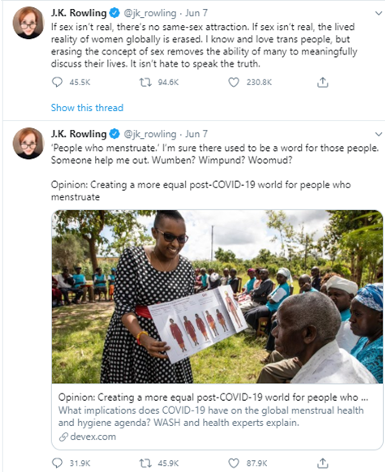
The beginning of JK Rowling’s anti-trans tweet tirade, mocking the term “people who menstruate” and talking about the importance of biological sex. From https://twitter.com/jk_rowling
In response, as well as follow-up tweets, she published a defensive 3600 word essay to her website saying she “knows and loves trans people” but doesn’t want them to invalidate her lived experience as a woman, and doesn’t want them in women-only spaces where women should feel safe.[2] Unfortunately for transgender people, this hate is nothing new, and is increasingly common, particularly in the UK. This transphobia has very real consequences, with high numbers of attempted suicide and hate crimes that can and do lead to death. In 2019, 331 trans people were killed globally.[3] This is due to systemic hate – as this blog explores, using Sarah Ahmed’s idea of hate ‘economies’ to explore the links between seemingly innocuous online comments, and a longer history of violence of both literal and representational forms.
A quick background to TERF Ideology
The phrase TERF -trans exclusionary radical
feminist- has come to designate all feminists who oppose trans rights and inclusion in the feminist community. While originally intended as a descriptor, it has been seen as a slur by some it is applied to.[4]
Anti-trans sentiments in feminist communities have been around since second wave feminism in the 1970s. The stance now referred to as TERF has been attributed (not singularly, but perhaps as the best known example) to the 1979 book The Transsexual Empire by Janice Raymond, who stated that gender is an expression of biological sex, which is chromosomally dependant. She stressed the impossibility of changing chromosomal sex, and therefore gender and sex are decided at birth and cannot change. Because of this, Raymond views male-to-female transition as an act of the male patriarchy, meaning that in her view, trans women are not and can not ever be ‘real’ women.[5]
This position has been reinforced by trans exclusionary feminist academics, while trans activists and scholars note the impact of this publication in feminist circles. And this perspective has certainly created a divide, with many feminists, particularly in the UK, now framing trans rights as being in direct conflict with women’s rights. To trans exclusionary feminists, trans men are women and trans women are still men, and are therefore invaders in women’s spaces.
Transphobia in British feminist communities: a legacy of colonialism
TERF ideology is extremely prolific in the UK. This appears to be for several reasons; While other countries such as America have experienced mass movements over the last 30 years surrounding globalisation, police brutality, race, gender and class, the UK has experienced far less of these protests. This means middle and upper-class white feminists have not had their privilege questioned by black and indigenous feminists as their American counterparts have, and so have retained their credibility and influence.
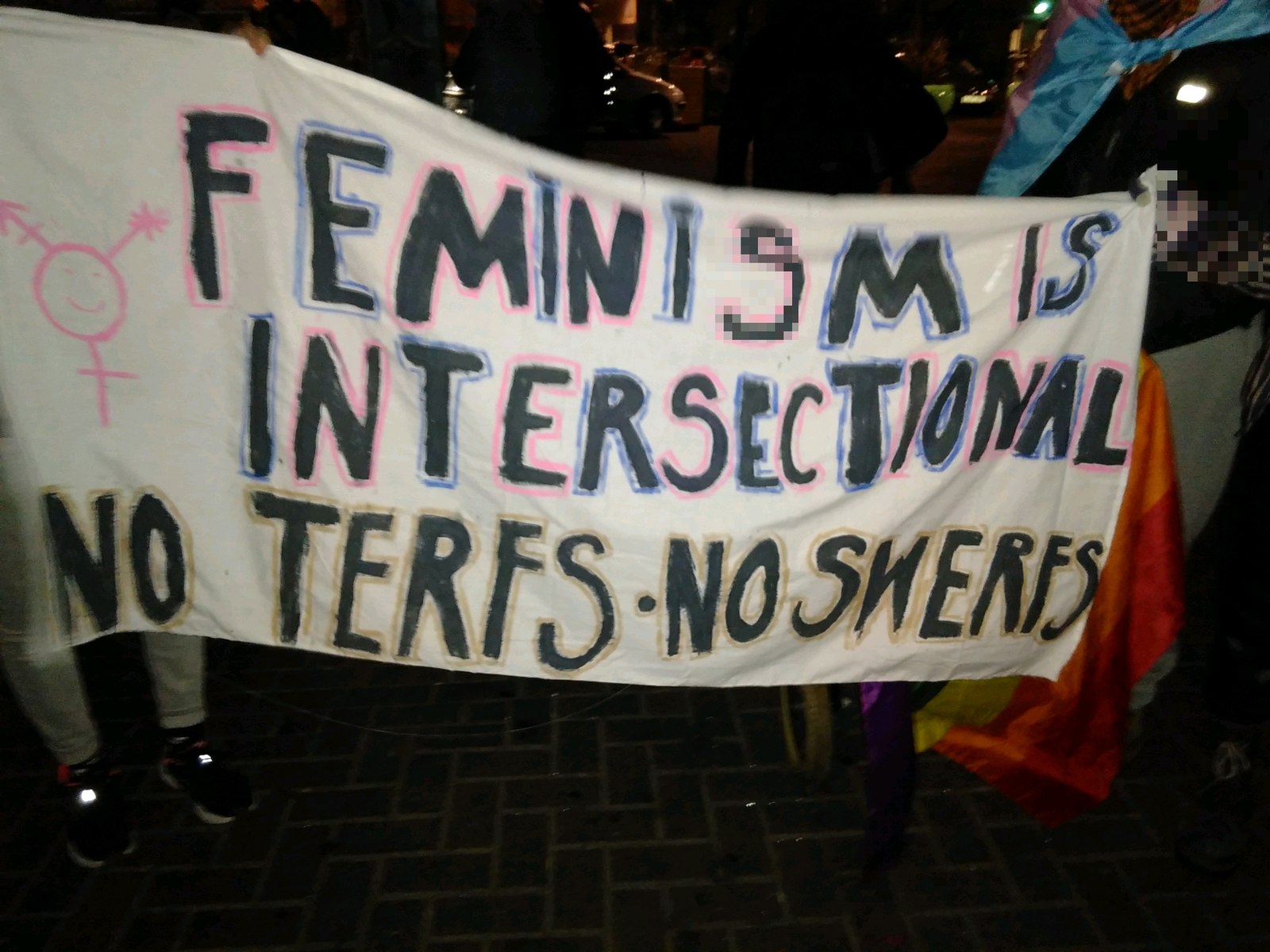
Feminists hold an anti-TERF sign, outside a Labour Party event in which TERFS were participating, in London, March 2020. Attribution: Charles Hutchins. Source: https://commons.wikimedia.org/wiki/File:Feminism_is_intersectional_No_Terfs_No_Swerfs_(49643458203).jpg
There is also a long history of British feminism intertwining with Colonialism. The British Empire enforced heterosexuality and the gender binary on indigenous communities at a policy level, constructing the racial ‘other’ as not only fundamentally inferior, but also as a sexual menace because of their gender variance from perceived ‘biological realities’. It is this enforcement of the binary that Trans exclusionary feminists continue to impose. It should be noted that Irish feminists have rejected British TERF ideologies specifically because of their experiences under British Colonialism.[6]
This transphobia, a hatred and fear of trans bodies and their variations to the gender norm have been expressed in many ways. Notably there have been debates and protests over the use of single-sex spaces – women’s bathrooms and the Ponds in London.[7] (Trans people’s use of single-sex spaces is legally protected under the 2010 Equality Act.) These incidents come back to the perspective that trans women are still men, and are therefore forcing themselves on women in these spaces, an act which some TERFs have likened to rape. This violent language creates fear and paranoia, making trans people something “other” to be afraid of. This has led to sensationalised cases of ‘gender fraud’ in the media, where people have been convicted of hiding their gender from partners.
The power of paper and screen
I would argue that mainstream media in general is responsible in part for this narrative. As discussed in the 2020 documentary Disclosure, which is about trans people in media, films about trans people have historically shown the partner discovering their lover has the ‘wrong’ genitals and breaking down, even vomiting in reaction.[8] This validates TERF perspectives of trans women having something to hide, of lying and being predatory villains, in the acceptable mainstream.
In 2018 TERFs got more airtime than ever as the Gender Recognition Act of 2004 was reviewed. At the time, the GRA required a years long medicalised process to ‘prove’ a person was trans. Recommended reforms encompassed inclusion of trans youth, no medical diagnosis and the ability to self -identify through a more streamlined process.[9] High-ranking TERF Journalists such as Suzanne More and Julie Burchill wrote anti-trans pieces which spread throughout the UK media. These focused on the ‘taking away’ of women’s rights and the fear that violent men would be able to simply say they were a woman and be legally allowed in woman-only spaces.
While this seems convoluted and is a misrepresentation of the process of obtaining a gender recognition certificate, the idea took off with progressive papers such as the Guardian publishing anti-trans pieces. Because of this backlash, the GRA was never updated. The relationship between these different institutions – media, legal system, and medicine, worked together to enact powerful restrictions over the bodies, and bureaucratic self-representations, of trans people.
Hated Bodies
British-Australian feminist scholar Sara Ahmed discusses how hate works through bodies in The Organisation of Hate.[10] She argues for emotions as a sort of economy, meaning they carry transferable value. In this way, when an act of hate occurs, such as a transphobic hate crime, the value of the emotion is passed from the aggressor to the victim. The hate is transferred, and so the victim becomes the hated, and the hatred is amplified the more people project it.
This is certainly something that happens to trans women in feminist communities, and even in LGBT+ feminist spaces. At the Dyke March London in 2014, a trans woman speaker was protested, with TERFs proclaiming her a man taking over an event for women and forcing Lesbians to accept the penis, essentially stripping them of their female lesbian identity. Through this act of hate, by refusing to see her as a woman they disallow her to sexually identify as a Lesbian. This takes away huge aspects of this woman’s personhood, due to the perceived male aspects of her body.
Statistics show that 48% of trans people in the UK have attempted suicide and 84% have thought about it. This follows 65% experiencing discrimination or harassment for being trans, and 41% being attacked or threatened in the last five years.[11] These figures are a staggering reflection not only of the hate trans people receive, but how they hate themselves… with Ahmed’s idea of the economy of hate providing a framework for seeing this as transferred, rather than inherent. Not a specific quality of trans bodies, but projected onto or attached to them over time, through historically contingent, and repeated social processes (that include media representations and social media conversations).
Ahmed specifically discusses how the circulation of hate works on the collective bodies of a specific group, by creating a crisis narrative. What TERFs seem to fear most is that a trans woman may be among them without them realising. By framing cis women as victims of trans rights, TERFs make trans women- and their literal bodies- the enemy, and to progress this they have adopted a narrative of violent bathroom attacks in these ‘safe’ single-sex spaces.
A recent study has shown this fear is untrue, and there is no correlation between trans inclusiveness and bathroom safety.[12] Yet this narrative persists, because it projects hate onto trans women. Their bodies have become literal political battle grounds where they fight for the right to simply exist, and to access basic public facilities.
Trans activism in the wake of JK Rowling’s comments
There are, of course, counter-forces to this hatred. Activism by trans people and their allies has continued in response to J K Rowling’s online comments, and after the even more recent announcement that her new crime fiction book, published under the pseudonym Robert Galbraith, features a male killer who dresses up as a woman to kill his victims. It should be noted that Robert Galbraith Heath was the name of one of the earliest psychiatrists to experiment with gay conversion therapy. Although many have seen this as a coincidence, and JK Rowling has denied any connection.
Trans activist and model Munroe Bergdorf, who was in 2014 described as “a cornerstone of London’s trans scene” by the London Evening Standard and was the first trans model for L’Oreal in 2017[13] has been extremely active in her responses on Twitter, offering support for her trans followers, and giving suggestions of what people can do to support the trans community.

Thread from Munroe Bergdorf’s twitter account after JK Rowling’s tweets and essay in July. From https://twitter.com/MunroeBergdorf
“If transphobia is the future of @jk_rowling’s legacy, it’s not going to age well. In writing transphobic FICTION under the pseudonym of a gay conversion therapist, where the overarching moral seems to be ‘never trust a man in a dress’ she is revealing exactly who she is… The REALITY is that trans people are more likely to be murdered, than commit murder. The REALITY is that trans people are already navigating a hostile environment worldwide and this only adds to that hostility. @jk_rowling is dangerous.”[14]
Mermaids, a LGBTQ+ charity that supports trans and gender diverse youth has also called for JK Rowling to think about the impact her statements are having on trans youth. “Trans people are far from being accepted by society and suffer real life discrimination, including physical violence, employment discrimination and everyday harassment on the street. Trans young people should not be used to amplify separate issues such as male violence, bodily autonomy or patriarchy.”[15]
Trans actress and artist Ela Xora who had a filmed role for the Wizarding World of Harry Potter theme park has ripped up her contract and demanded that her scenes are removed from the park in retaliation to JK Rowling’s stance,[16] and many of the crew of the films including Daniel Radcliffe, Emma Watson, Bonnie Wright, Evanna Lynch, Eddie Redmayne, as well as Noma Dumezweni, who played Hermione in the stage play Harry Potter and the Cursed Child have released statements in support of trans people on their social media platforms.[17]
Being (and buying) better
In 2015, the Smithsonian published an article called “Reading Harry Potter may make you a better person,” which stated that people who read the books grew up to be more tolerant and accepting as adults, based on an Italian study.[20] It seems to me now, that perhaps that is still true, as fans have been vocal in calling JK Rowling out for her transphobia.
Many are now feeling disillusioned with the franchise, which, for many of us, was a large part of our childhood and formative years, and helped mould us into the people we are today. It is extremely difficult to separate the author from her works (if that should even be done at all) and has for many tainted something that had a large impact on our lives. I know that myself and many friends will no longer be buying merchandise, or supporting any of JK Rowlings new books or projects, Harry Potter related or not, and some friends are getting rid of all their Potter memorabilia. Fan sites have announced they will no longer discuss JK Rowling or her career.[18]
Fans online are calling for people to email the publishers of her Galbraith novel to let them know that they will not be supporting a company publishing transphobic material, and noting the dissonance between the company publishing such works and also having a Pride feature on their front page showing all the queer and trans novels they publish.[19]
Trans women are women, despite what TERFs will tell you. People like JK Rowling will continue to spout their sex-based hate. But as activists and fans alike are showing, if hate is economic, we can refuse to buy it.
References
[1] Jamieson, Amber. 2020. “JK Rowling Followed up her Anti-trans tweets with a full Anti-trans Essay.” Accessed 25 July 2020 at: https://www.buzzfeednews.com/article/amberjamieson/jk-rowling-antitrans-statement
[2] Rowling, Jk. 2020. “JK Rowling Writes about her Reasons for Speaking out on Sex and Gender Issues.” Accessed 25 July 2020 at: https://www.jkrowling.com/opinions/j-k-rowling-writes-about-her-reasons-for-speaking-out-on-sex-and-gender-issues/
[3]Wareham, Jamie. 2019. “ Murdered, Hanged and Lynched: 331 Trans People Killed this Year.” Accessed 25 July 2020 at: https://www.forbes.com/sites/jamiewareham/2019/11/18/murdered-hanged-and-lynched-331-trans-people-killed-this-year/#675d66c22d48
[4] Hines, Sally. 2019. “The Feminist Frontier: on trans and Feminism” Journal of Gender Studies. 28:2. p.145-157.
[5] Raymond, Janice. 1979. The Transexual Empire: The Making of the She-male. United States: Beacon Press.
[6] Lewis, Sophie. 2019. “How British feminism Became Anti-Trans.” Accessed 27 July 2020 at: https://www.nytimes.com/2019/02/07/opinion/terf-trans-women-britain.html
[7] Ewens, Hannah. 2020. “Inside the Great British TERF War” Accessed 27 July 2020 at: https://www.vice.com/en_uk/article/889qe5/trans-rights-uk-debate-terfs
[8] Feder, Sam. dir. 2020. Disclosure: Trans Lives on Screen. Los Angeles: Bow and Arrow Entertainment. Netflix.
[9] Miles, Laura. 2018. “Updating the Gender Recognition Act: trans oppression, moral panics and implications for social work. Critical and Radical Social Work. 6:1. p. 93-106.
[10] Ahmed, Sara. 2004. “The Organisation of Hate.” In The Cultural Politics of Emotion. Edinburgh: Edinburgh University Press.
[11] Stonewall. date unknown. “Trans Key Stats”. Accessed 29 July 2020 at: https://www.stonewall.org.uk/sites/default/files/trans_stats.pdf
[12] Moreau, Julie. 2018. “No Link between trans-inclusive policies and bathroom safety, study finds.” Accessed 30 July 2020 at: https://www.nbcnews.com/feature/nbc-out/no-link-between-trans-inclusive-policies-bathroom-safety-study-finds-n911106
[13] Wikipedia. Last updated 7 September 2020. “Munroe Bergdorf.” Accessed 20 September 2020 at: https://en.wikipedia.org/wiki/Munroe_Bergdorf
[14] Bergdorf, Munroe. 2020. “Twitter thread.” Accessed 20 September 2020 at: https://twitter.com/MunroeBergdorf/status/1306275552957997058
[15] Mermaids. 2020. “A call to JK Rowling.” Accessed 17 September 2020 at: https://mermaidsuk.org.uk/news/a-call-to-j-k-rowling/
[16] Maurice, Emma. 2020. “Trans Harry Potter actor rips up her contract and demands JK Rowling pays attention to thousands of years of transgender history.” Accessed 30 July at: https://www.pinknews.co.uk/2020/06/13/jk-rowling-trans-transgender-harry-potter-actor-ela-xora/
[17] Lenker, Maureen. 2020. “Every Harry Potter actor who’s spoken out against JK Rowling’s Controversial Trans Comments.” Accessed 20 September at: https://ew.com/movies/every-harry-potter-actor-whos-spoken-out-against-j-k-rowlings-controversial-transgender-comments/
[18] Murphy, J. Kim. 2020. “’Harry Potter’ Fan Sites will Minimise Future J.K. Rowling Coverage after Condeming Anti- Trans Views. Accessed 20 September 2020 at: https://variety.com/2020/film/news/harry-potter-jk-rowling-mugglenet-leaky-cauldron-anti-trans-1234697127/
[19] untitled Tumblr post. 2020. Accessed 20 September 2020 at: https://thesweetpianowritingdownmylife.tumblr.com/post/629503862222553089
[20] Lewis, Danny. 2015. “Reading Harry Potter Might Make you a Better Person.” Accessed 20 September 2020 at: https://www.smithsonianmag.com/smart-news/reading-harry-potter-might-make-you-better-person-180955196/
Incels ‘cash out’: gendered violence and the economies of hate
A post written by Jazzlin Carr, based on an ANTH424 assignment.
“He doesn’t seem like that bad of a guy. He just seems hurt, like he just wants a friend or support. I always thought incels were really bad people, but he seems like a good version of them.”
I looked over at my very liberal, ultra-feminist, Jacinda Ardern-loving partner in disbelief. We had just finished watching a YouTube video from the channel Jubilee entitled “I’m An Incel. Ask Me Anything.”.[1] The short clip features a self-proclaimed incel responding to questions from the public. While his identity is hidden from those asking the questions, he is shown to the camera.

A screenshot of the Youtube video “I’m an Incel, Ask Me Anything” posted by Jubilee. In this particular frame, a woman appears to be pointedly interrogating an incel named Derrick, whose demeanour and open palms facing up depict a certain passivity and openness. Source: https://www.youtube.com/results?search_query=incel
An incel, otherwise known as an “involuntary celibate”, is a self-imposed label used by mostly young males who define themselves by their inability to secure romantic or sexual partners despite having the desire for them, often attributing this to their anxious or shy behaviours, women’s high standards, or their unattractiveness or below-average characteristics. [2] They are most often found in online forums, where discussions are often characterized by self-loathing, resentment of more attractive males (known as “Chads”), and misogyny.
This definition, however, is fluid depending on who you ask. As one incel claims in his blog, anyone can be an incel “as long as they show signs of […] struggling with attaining romantic relationships”. [3] Others, myself included, would characterize the self-radicalizing nature of incel communities as a key part of the definition. Take a scroll through one of the few incel chatrooms that have not been blacklisted from internet servers and you’ll be hard-pressed to find a single discussion that does not dehumanize women, promote racist ideologies, encourage violence, or celebrate incels who have murdered women out of spite. [4]
You may not have assumed such a thing if your only portrayal of incels is from the Jubilee video I noted above. The incel featured, named Derrick, coolly responds to a variety of questions. He reacts to leading questions with calmness and ensures the interviewers that he is there “to give more of a positive light on [the incel] community”. He discusses his mindset, believing that “promiscuity leads to increased standards in more primitive aspects such as looks and that typically makes it harder for some people to find relationships” and generalizes this to cities such as “[Los Angeles] or London, or in Auckland, New Zealand”. He notes that it was “constant years of rejection” that led him to more “radical beliefs” which he equates to “old beliefs”. It is also noteworthy that he was very quick to say that he condemns the actions of mass murders identifying as incels. Instead, he thinks “the reason why they committed those actions was […] desperation, or […] mental problems.”. When watching the video again, I can understand where my partner’s empathy to Derrick comes from. His demure presence, calm responses, and position as a “traditionalist” who has been hurt time after time again presents a convincing case towards justifying the incel perspective as a matter of difference of opinions, or a wounded community seeking internal support.
But what is the actual impact of this point of view, on the lives and bodies of women? I turn to the writing of British-Australian scholar, Sara Ahmed, to explore this:
“It is the failure of hate to be located in a given object or figure, which allows it to generate the effects that it does” (2004, p49).
In her book The Cultural Politics of Emotion, author Sara Ahmed discusses the organization of hate, and considers its circulation as both a defence mechanism for those who see another body as a threat to something they love, as well as its impacts on the figures who have been aligned by the narrative of hate as the “common enemy”. [5]
Her analysis seemed fitting for this topic and applying it to the performance of incels has me wonder if it may clarify why Derrick’s narrative could almost seem, dare I say, justified.
In a chapter on hate, Ahmed’s overarching theme is that hate operates as a sort of economy. Essentially, hate is fluid and moves between bodies and signs, and is not fixed on one subject. If an incel posts a rant on a chatroom about his displeasure with a woman who rejected him that day, the specific woman involved is simply a “nodal point in the economy”. The hate has another origin and destination, one which is more broadly connected to the perceived threat towards something the incel desires. In this instance, it may be their desire for a relationship and feeling loved. From this perspective, the hate’s origin was not in the encounter with the individual woman, but rather in years of rejection. The destination of that hate is not towards her, but rather, to a common body of women which the incel deems as a threat to ‘traditional’ relationships that they wish to participate in, but feel they are blocked from. In this example, we see how an incels hate is economic.
It is this inability of hate to be fixated that allows it to grow and fester in these groups. The vagueness of the enemy allows for particular narratives to be applied to any individual who may appear to be a part of that group. In the case of the incels, any woman could therefore fit the narrative as being a threat to traditional relationships.
But how does this economy of hate affect the bodies of the group considered a “threat”?
“There can, in fact, be no hatred until there has been long-continued frustration and disappointment” (Glenn Allport, in The Nature of Prejudice, quoted by Ahmed 2004, p50).
Derricks relatively innocuous comments contribute to the investment of hate towards women by furthering a narrative that their desire for more liberal roles and modern lifestyles is raising their expectations of men to the extreme, so that more traditional or less attractive men can no longer find relationships or love. For one, it is rhetoric that seals female bodies as objects of hate. This kickstarts a chain of effects that promote and support violence. It contributes to real physiological symptoms for those who must live in these bodies in a number of broader ways too. This is evident in the below photo, selected by Stuff for its news article on the event in 2015, which depicts the consequences of incel behavior on women who are not direct victims of its violence, who instead may suffer from fear, post-traumatic stress disorder, nightmares and anxiety
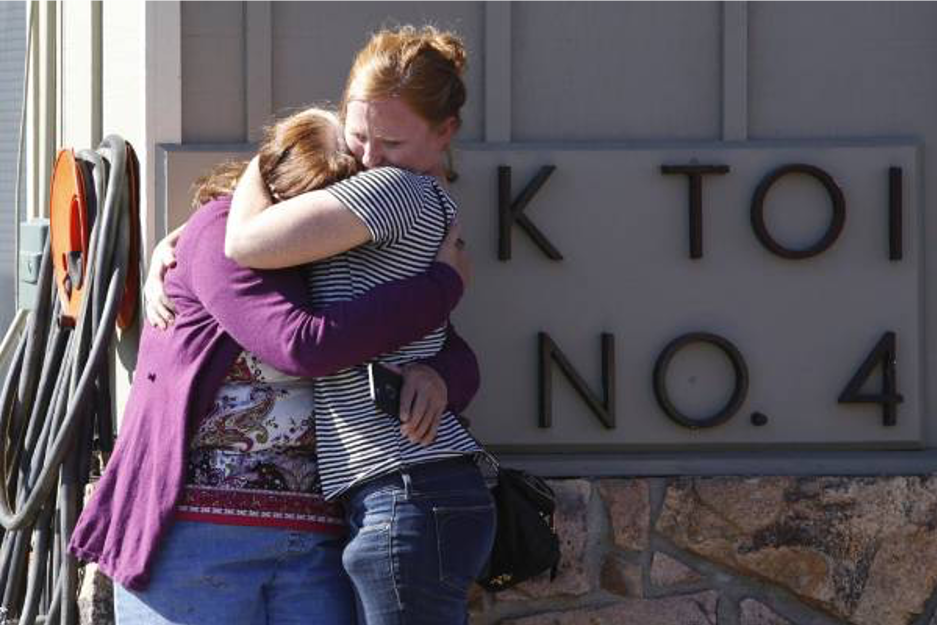
Two women comfort each other following the Umpqua Community College in Roseburg, Oregon. This attack killed 10 and injured eight others. The attacker was an incel, who expressed sexual frustration and blamed women’s standards for his virginity at age 26. Credit: Steve Dipaola/Reuters. Source: https://www.stuff.co.nz/world/americas/72625797/10-dead-in-shooting-at-umpqua-community-college-in-roseburg-oregon
If hate is an economy, it also performs as a form of capital. The effect of an incel’s hate does not reside solely in the individual object of their displeasure, but rather accumulates over time. I would take Ahmed’s imagery of hate as an economy a step further, and argue that is when these investments pile up and a member of the threatened community tries to “cash out” on this accumulated capital of hate that violence is used as a defence against the hated bodies. The collection of testimonies of rejection, frustration, and disappointment found on these incel chat rooms becomes so overwhelming that an incel feels justified in reacting with violence, in the same way as a person who has accumulated savings may feel enticed to splurge with the surplus.
The investment of hate on these chatrooms is made evident in the justification of violence on women when researching any of the major incel-led terror attacks of the past couple decades. After a one self-described incel posted a 137-page manifesto to a chatroom in 2014, he would thereafter kill six people and wound fourteen more in Isla Vista, California. The reaction from the online incel community was one of praise; his face quickly photoshopped onto Christian icons, and his name being associated as the “primary incel ‘saint’”, a reflection of how they believed he was the saviour of incel values. [6] In 2015, an incel in Oregon shot and killed nine classmates and a professor, and injured eight others, in what he described in his manifesto as the reaction of his frustrations to being a virgin at 26. The reaction from the incel community was one of support and empathy, with one user commenting a poem, reading “society failed him/it’s not his fault/don’t blame him/he was the hero we deserved.”. [7]

A screenshot taken from an incel forum in August 2020. The commentator notes how the van attack in Toronto was “lifefuel” for them. They go on to note preferred methods of killing in “ER” attacks, a popular incel abbreviation for violent attacks. “ER” is a reference to the initials of the “Saint” of the incel community, the Isla Vista killer. Source: http://wehuntedthemammoth.com/2018/04/24/incels-hail-toronto-van-driver-who-killed-10-as-a-new-elliot-rodger-talk-of-future-acid-attacks-and-mass-rapes/
In 2018, an incel in Toronto, Ontario used a rented van to kill ten victims and injure an additional sixteen, as a form of revenge for perceived sexual rejection from women. Most clearly evidencing the use of hate as capital for the incel community, one commentator on a chatroom posted “This shit right here is lifefuel for me”. [1]
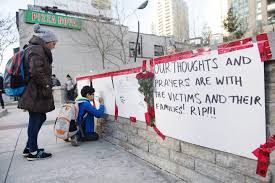
A photo (taken 24 April 2018) of the impromptu memorial created by local residents after the Toronto Van Attack, where a man drove along the sidewalk for 2 kilometers, purposefully hitting as many pedestrians as it could. The perpetrator posted on his Facebook account shortly before the attack, with a statement referencing a man considered to be the “Saint” of incels. Credit: Quentin9906. Source: Wikimedia Commons.
The original quote from my partner, that opened this blog, shows how important it is to grasp the economy of hate. Even though my partner did not agree with Derrick’s views, the empathy he felt for him could be a slippery slope into justifying the mindset of an incel, thus giving their alignment of female bodies as a threat imagined ground.
The accumulation and investment of this hate is what contributes to not only the everyday pain and victimization of women but leads to the in-group justification of violent expressions of hate, performed in terror attacks such as those mentioned above. In recognizing the performance of hate as an economy, one can work to actively question its impacts and limit the influence one perspective may have on the incel community.
References
[1] I’m An Incel. Ask Me Anything. (2019). YouTube. Available at: https://www.youtube.com/watch?v=DdHqzr4DyIs.
[2] Opinion | Men are in trouble. ‘Incels’ are proof. [online] Washington Post. Available at: https://www.washingtonpost.com/opinions/men-are-in-trouble-incels-are-proof/2019/06/07/8d6ad596-8936-11e9-a870-b9c411dc4312_story.html.
[3] SeventhQueen (2020). The Incel Among Us. [online] Incel Blog. Available at: https://incel.blog/the-incel-among-us/
[4] Inceldom Discussion [Online] Incels.co Source: https://incels.co/forums/inceldom-discussion.2/
[5] Ahmed, S. (2015). The cultural politics of emotion. New York: Routledge Taylor & Francis Group.
[6] Beauchamp, Z. (2019). Incels: a definition and investigation into a dark internet corner. [online] Vox. Available at: https://www.vox.com/the-highlight/2019/4/16/18287446/incel-definition-reddit.
[7] bust.com. (n.d.). ‘Beta Males’ Want To Kill Women Because They Can’t Get Laid. [online] Available at: https://bust.com/feminism/15551-mo-beta-blues.html
[8] We Hunted The Mammoth. (2018). Incels hail Toronto van driver who killed 10 as a new Elliot Rodger, talk of future acid attacks and mass rapes [UPDATED]. [online] Available at: http://wehuntedthemammoth.com/2018/04/24/incels-hail-toronto-van-driver-who-killed-10-as-a-new-elliot-rodger-talk-of-future-acid-attacks-and-mass-rapes/
Night terrors: Counting loss in a global pandemic
A post written by Ellan Baker and Susan Wardell, based on an ANTH424 assignment on ‘visual images and the communication of suffering and evil’.
On March 19th 2020, social media and news sites were flooded with images of military trucks, moving the dead out of the overwhelmed small Italian city of Bergamo, for cremation elsewhere [i]. Europe had replaced China as a new epicentre of the COVID-19 pandemic.
Northern Italy is known for having small towns and tightly-knit communities, as well as for the beautiful scenery, cuisine and fashion which attract both domestic and international tourists iv. It was largely through travel and social interaction, that the new strain of coronavirus (named SARS-CoV-2) was spreading. Places like Bergamo, a city of just over 100,000 residents, had little time to prepare iii ii.
Picturing the scale of loss

One of the images from mainstream television (Sky News) showing Italian army trucks transporting the dead. Source: https://news.sky.com/story/coronavirus-italian-army-called-in-to-carry-away-corpses-as-citys-crematorium-is-overwhelmed-11959994
At the time that images of the crematory trucks were released, Italy was in an exponential climb in the number of cases. The number of deaths had now become a few hundred a day, despite best efforts of intervention and prevention. On March 19th, total fatalities had reached 3,405 and were still increasing vi.
As the pandemic spread, people all over the world took in this type of numerical information, to make sense of what was happening v . Rates of spread, death tolls, graphs and spreadsheets… these were forms of knowledge about the reality of Covid-19, which were also somewhat removed from acknowledgements of the level of human suffering it was creating, with every new case, and with every death of a unique human person that those numbers represented.
In this blog we discuss the ideas that images, as a different way of communicating suffering and loss, can help to rehumanise topics such as this. We argue they provide understanding of the scale of devastation in a different way than numbers do, and can be part of catalysing social change because of this.
Echoes of (an invisible) war
 Perhaps the most highly circulated images of the trucks (left) carrying the deceased through Bergamo, came from a tweet by Guido Salvaneschi, a citizen of Bergamo vii.
Perhaps the most highly circulated images of the trucks (left) carrying the deceased through Bergamo, came from a tweet by Guido Salvaneschi, a citizen of Bergamo vii.
Tightly packed, the military-style trucks are moving in single file down the street. The arrangement of the trucks on the empty street has a ceremonial feel; dark colours, and a string of lights. The road is clearly in an everyday residential area, with a shop, carpark and green field visible alongside. But here it becomes a platform for procession vii.
The escort occurred at night – the image taken at 9:28pm – almost as if they needed to hide the moving of the dead, and shelter the living population vii. Was the suffering so great, that it could not be experienced during the day? Like the living, the day is sheltered from agony; maintaining its symbolic goodness, while night is reserved for pain.
In the photo there are many trucks, and within each truck, there are many bodies vii. The photo both is and isn’t about numbers. The impact of this photo is largely because the trucks are in fact innumerable, their line extends out both sides of the frame of the photograph. It asks us to recognise the scale of loss without making us, or letting us, count and quantify. It evokes the horror of scale, without relying on numbers. It makes an affective connection to the topic, without being explicit.
The image of a fleet of military trucks can’t help but raise the ghosts of war; historical echoes that will have different levels of feeling attached for different viewers, in different places. At very least, the string of large trucks connotes a high number of casualties, and yet there is a disjunct for the viewer, since absent from the still and tidy environment they move through is any evidence of danger or threat. The toll is being counted, truck by truck, but the enemy itself is a ghostly absence; an invisible virus, impossible to see or to conceptualise, except through its effects.
Watching from afar
At this time this photo was taken and posted, New Zealand and many other countries felt far from the ‘front line’. The need to take action here was not yet evident. So we watched the situation unfold through images like this, but even as we did, the virus exponentially spread once again, leaving tremendous amounts of uncertainty in its wake iii
The now-famous images of these trucks did not come, in the first instance, from scientists, journalists, or other authoritative communicators. Rather they appeared in the often informal domain of social media. The context of apartments opposite implies that this photo too is taken from an apartment window, looking down. The photographer is distant from the street, giving an even more heightened sense of risk or taboo in the scene below.
The juxtaposition of the sombre with the everyday (both in terms of the setting, the intimate framing of the photo, and its context on social media) makes looking at it all the more difficult.
Images of tragedy and horror often circulate well on the media – like this one, going viral, reaching around the world. Anthropologists Arthur and Joan Kleinman wrote about the circulation of images in the media in 1996, before the advent of social media, and yet they discussed many trends we could see continuing, and even increasing, today. They note, for example “viewers become overwhelmed” from a distance and come to have “moral fatigue, exhaustion of empathy, and political despair.” ix
Given the continuous flow of numbers and statistics, of images and video, through the news, this could well have been the case. Yet people seemed to want to look. Kleinman & Kleinman also discuss that despite their potential to overwhelm, images of suffering are often appealing because they leave the viewer asking questions ix.
The unending line of crematory trucks going beyond the photo’s borders shows the impact of the viruses devastation. But what questions does it ask? Are they questions that are answerable? Either way, they were questions that New Zealand did have to approach, as citizens, and as a nation, not long after Italy.
The human struggle
“Struggling to cope” vii the photo caption says. This is, on one level, a comment about institutional and systemic capacity to practically process so many dead – since these trucks were deployed for the purpose of relieving an already overloaded crematory system vii. But the phrase can also read as a marker of psychological overwhelm for those living through the experience.
The pain that the virus has caused is immense. Images of the COVID 19 pandemic re-humanise numerical information, by bringing Twitter users closer to the suffering of those who are grieving losses of loved ones. This can be contrasted to the insistent numerical broadcasting, which removes the emotional quality and the human context of information, and by itself, refuses to acknowledge the human lives behind them. As the quote often attributed to Stalin goes: “if only one man dies … that is a tragedy. If millions die, that’s only statistics.” x
Meanwhile, images have a variety of different ways of highlighting the specific, situated, and human meanings of these numbers. For example, the image below is of a blessing taking place by the service providers, to finalise the deceased person’s life, with dignity.

Photo of two men giving dignity to the dead, despite the large number of dead and the lack of family or friends of the loved one present. Source: Financial Times, https://www.ft.com/content/5e30a130-d62a-4c4c-a81f-b89f2448d9c8
This image, taken by Italian news photographer Piero Cruciatti, offers something different to the sense of scale of death and loss in Salvanechi’s image, in terms of communicating the impact of COVID-19. It reveals one part of the story behind each number, behind each body that the viewer understands to be concealed in those many military trucks. It shows the layers of human care and meaning invested into each of them; how the people closest to the suffering still muster the strength and urgency to undertake the enormous amount of cultural and physical work required to bring each person’s precious life to a close.
It shows, perhaps, the tragedy of the ‘one man’ rather than the thousands, and in doing so, it arguably brings a different kind of understanding of this event, than it does to contemplate the thousands.
Image and response
Paul Frosh, an academic writing about digital media, and specifically how people view and respond to the suffering of distant othersxi. One’s moral “response-ability”, he argues, is linked to the sensory mediums through which one is viewing and responding. People who viewing Salvanechi’s photo on Twitter, for example, had to choose how to respond, with their eyes, hands, and attention. Practically this could mean many things; clicking, commenting, sharing. More broadly, categories such as ‘witnessing’ explain what type of moral response these micro-actions may represent.
Images can broach both a geographical and emotional distance, and act as a testimony and a memorial in and of themselves, to human experience, and human suffering. In Salvanechi’s photo, and the photo by Piero Cruciatti, we are forced to consider the suffering that quickly can become incomprehensible and overwhelming vii– given a chance to hold our gaze, and to be witnesses to this horrible reality. And in doing so, to form a kind of momentary connection with other people’s life world’s that is void in the production of infographics and statistical data in journalism.
In addition, there are practical responses that can flow on from this deeper kind of acknowledgement. Read in full, the caption on Salvanechi’s candid night-time photograph has a clear intended purpose; asking for more serious adherence to policies of social isolation, as a tactic to slow the spread of COVID-19. Kleinman and Kleinman’s article acknowledges that images can become a social and symbolic commodity for igniting action and change ix.
When New Zealand’s time came, we also had to make choices about setting policy, and also following policy. About lockdowns and closures and social distancing, and other dramatic social changes. Who can say whether the things we had already witnessed overseas, through the lens and eyes of journalists and everyday citizens on social media, was part of shaping our response?
To conclude…
Whether directly affected or not, in this strange period of human history we have all become ‘online witnesses’ the the COVID19 pandemic. Many of us have absorbed large amounts of numerical and statistical information every day iii, vi. While this information provides easily absorbable overviews of the virus’ impact, it cannot contain or express the more human aspects of this moment in time. However, sprinkled throughout the media coverage, have been images that have also mapped the scope and scale of the pandemic, but in an entirely different way.
Images can hurt us, can wound us. They can also, at the same time, offer an embodied empathetic experience of the suffering of others.. Sometimes they can contribute to changes not only in how we understand the world, but the choices we make in response to it. The images of crematory trucks in Northern Italy expressed the large scale devastation of the virus, at a moment in which the whole world was watching, and deciding how to react. What we owe to these cannot be measured.
References
i National Post, 2020. COVID-19 Italy: Military fleet carries coffins of coronavirus victims out of overwhelmed town. [Online]
Available at: https://nationalpost.com/news/world/covid-19-italy-videos-show-military-fleet-transporting-coffins-of-coronavirus-victims-out-of-overwhelmed-town
[Accessed 09 April 2020].
ii Worldometer, 2020. Italy Population (LIVE). [Online]
Available at: https://www.worldometers.info/world-population/italy-population/
[Accessed 20 April 2020].
iii NZHerald, 2020. Covid 19 coronavirus: How virus overwhelmed Italy with almost 5000 deaths in a month. [Online]
Available at: https://www.nzherald.co.nz/world/news/article.cfm?c_id=2&objectid=12318768
[Accessed 20 April 2020].
iv Turismo Bergamo, 2020. Visit Bergamo: An Italian masterpiece. [Online]
Available at: https://www.visitbergamo.net/en/news/item/278/
[Accessed 21 April 2020].
v Knox, C., 2020. NZHerald. [Online]
Available at: https://www.nzherald.co.nz/nz/news/article.cfm?c_id=1&objectid=12322890
[Accessed 04 May 2020].
vi Worldometers.info, 2020. WORLD / COUNTRIES / ITALY. [Online]
Available at: https://www.worldometers.info/coronavirus/country/italy/
[Accessed 20 April 2020].
vii Salvaneschi, G., 2020. Twitter.com. [Online]
Available at: https://twitter.com/guidosalva/status/1240555847849312256
[Accessed 09 April 2020].
viii Clark, H., 2020. Missing In Action: the lack of a globally co-ordinated response to Covid-19. [Online]
Available at: https://www.stuff.co.nz/national/health/coronavirus/120969978/missing-in-action-the-lack-of-a-globally-coordinated-response-to-covid19
[Accessed 04 May 2020].
ix Kleinman, A. a. K. J., 1996. The Appeal of experience; the dismay of images: cultural appropriations of suffering in our times. Daedalus, 125(1), pp. 1-23.
x Stalin, J., 1947. A Single Death is a Tragedy; a Million Deaths is a Statistic. [Online]
Available at: https://quoteinvestigator.com/2010/05/21/death-statistic/
[Accessed 21 April 2020].
xi Frosh, P., 2016. The mouse,the screen and the Holocaust witness: Interface aesthetics and moral response. New Media and Society, 20(1), pp. 351-368.
The suffering of war, the eye of the beholder
A post written by Samuel McComb, for an ANTH424 assignment on ‘visual images and the communication of suffering and evil’.
“What has been seen cannot be unseen, what is has been learned cannot be unknown.”
– C.A Woolf
I love art. Creation in different forms has provided me with an outlet where nothing else can, and exposed me to works that have not left me to this day. Some I have carried lightly, while others remain as haunting as the first time I laid eyes on them.
One particular image has remained with me in a way others have not. It sits clearly in my mind’s eye. Without demanding focus or derailing the bustle of other thoughts, it simply reminds me of its presence with a whisper – “I’m still here”. For years I have held space for it, maintaining an uneasy truce. Decontextualized, it could do no harm nor be put to rest. But upon its most recent resurgence I felt compelled to understand more. I could not have predicted how thoroughly this discovery would challenge my perception.
Witnessing
My familiarity with this image harks back to my high school years. I was around 16, or perhaps 17, and in the midst of what one might describe as a period of healthy teenage angst, channelled and encouraged by an art department with an affinity for the grunge aesthetic. A plastic skeleton lived in the corner of the art room. The gift of a perfectly mummified cat (found when a neighbour’s house was relocated) received promises of “Excellence” grades for the year’s NCEA assessments. One lunchtime, two friends and I made the plastic skeleton a cardboard house, in the middle of the classroom. It was in this environment that our subject matter would be deconstructed, remade and distorted as we explored our theme; War.
Paul Frosh (2016), a media and communications researcher with the Department of Communication and Journalism at the Hebrew University of Jerusalem, made a strong argument that our ability to respond morally when witnessing suffering is shaped by how we view it – the medium used in its portrayal changes how we engage our senses. His conclusions are drawn from an analysis of user experience with Graphical User Interfaces (GUI’s) of smartphones and computers when viewing Holocaust survivor testimonies . These provided clear examples of how the experiences and actions we take when witnessing suffering shape our response.
Frosh then considered the moral obligations of the viewer when witnessing and responding to suffering. He divided these responses into three types: attention, engagement, and action. This was a useful framework within which view my own interactions with, and responses to, suffering, and specifically to explore how this raw image (fig.1) became the work I presented in my high school art folio (fig.3).
Attention
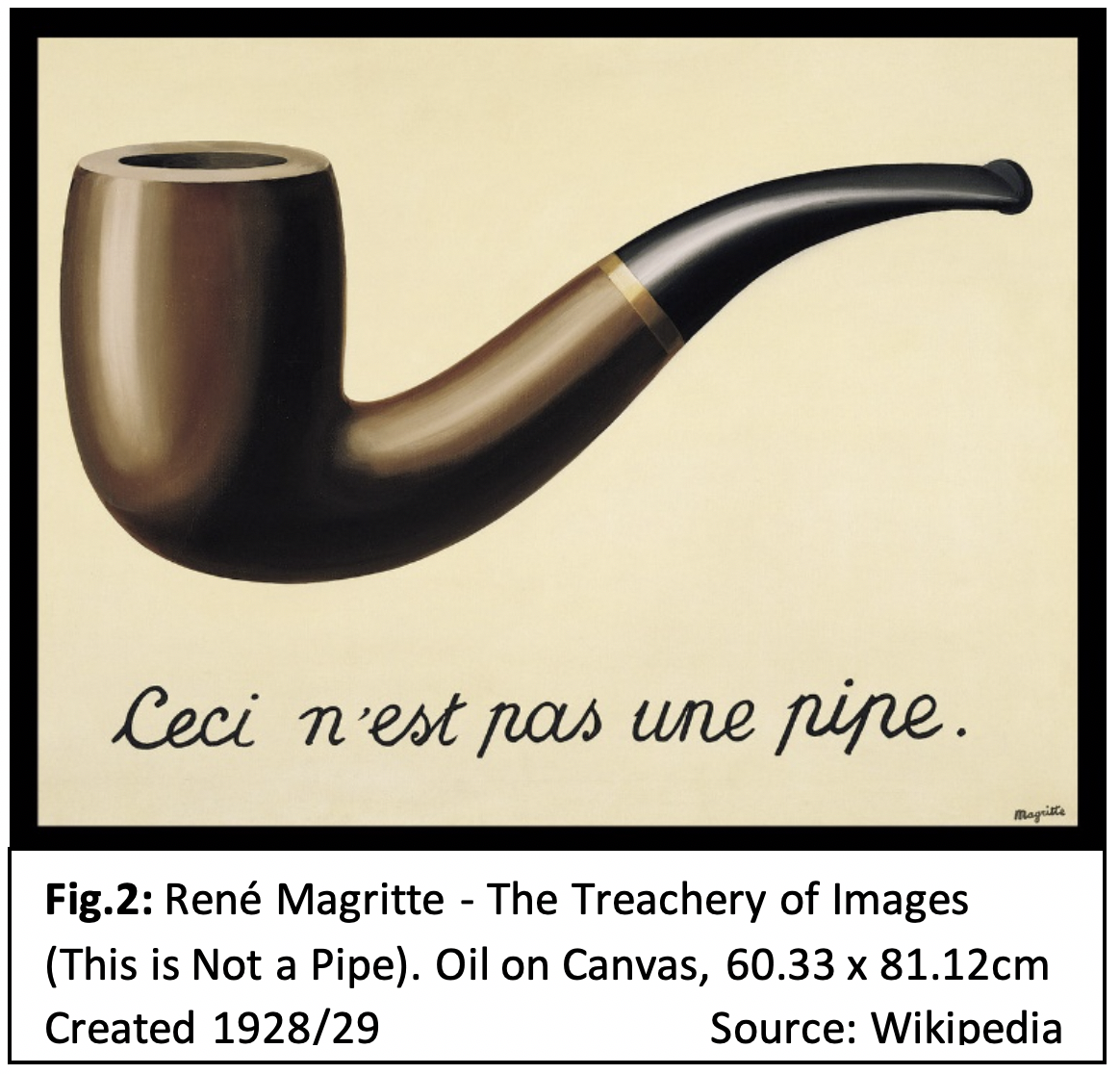 René Magritte famously captioned his pipe painting ’This is Not a Pipe’ (Fig.2); in other words, an image is not the object it represents. This is an influential idea in semiotics and fundamental to art.
René Magritte famously captioned his pipe painting ’This is Not a Pipe’ (Fig.2); in other words, an image is not the object it represents. This is an influential idea in semiotics and fundamental to art.
As I began my project, I was searching for images and shapes that represented an idea or a feeling. I first saw the soldier while shuffling through a stack of photocopies collected from old books and internet searches. These photos of medals, memorials, soldiers and statues had been carefully selected by the teacher to help us explore our theme. I recall that several images had been ripped by other students fighting for the ‘cool’ pictures – the ones with the biggest guns – by the time I began my search.
On one level these were just raw materials, no different to any other aesthetic resource provided by the teacher. Yet just as Frosh (2016) argued that how we access depictions of suffering plays a major role in our responses, the way I was searching for images shaped my response. I was holding history between my fingers, taking just enough time to gain some perspective of the content as I shuffled through the photocopies, before passing the stack of unsuitable pictures to the boy beside me. I could almost forget the reality behind the paper as I traced shapes overtop of figures, the smooth monotony of the paper interrupted by creases and rips as I thought of textures and colours to represent what I felt each copy contained. After the preliminary search, every raw image was subject to a deeper focus – I wanted to know what aspect of each photo captured my attention.
Action
Once we have seen suffering we are faced with a moral decision in how we respond. I could choose to ignore what I saw and felt in the image of this young soldier. I could choose another image, another topic to explore – my resulting artwork would have been displayed in the same way, to the same audience, regardless of the content. I could have found more images of big guns, but I didn’t. I needed to share what I had seen and felt.
Frosh (2016) describes the primary response to suffering in the digital age as communicative action – sharing a video or photograph widely, to raise awareness and prevent further actions, or simply to acknowledge that the suffering occurred. Sitting in my classroom, I needed to share what I had felt when I saw my soldier – the destruction of innocence that does not choose a side, the shared suffering inflicted on humanity through war. In this case though, sharing was not the quick click of a digital button, but a belaboured process of interpretation and creation with paint.
Sometimes we can choose to filter or curate our media feed, hide from the suffering before it overwhelms us. As in social media, so too in art we can choose to cover what we don’t want to see and focus on brighter times. Indeed Frosh (2016) makes clear there is the potential, when communicating enormously tragic events, for individual stories to be lost and the narrative of suffering to become overwhelming; the viewer becoming helpless and unable to respond morally to all they are exposed to. Reflecting on my folio (fig.3) certainly could elicit this response, I have to now reflect, as the young soldier becomes one small feature within the whole composition, one piece of a larger picture.
For a moment the viewer too feels the overwhelming weight of suffering that exists behind the barrier of our screens, and we become like my soldier, or perhaps the photographer – left with nothing but the ability to witness and remember.
Revelation
I never tried to find out more about the photographs I used at the time, nor in the ten years since I made this board. I knew the wars they came from, perhaps who they fought for, but not the stories of the men. In hindsight I was hiding from the full truth, keeping the distance of ignorance to keep from being overwhelmed. The folio received an Excellence, and placed second in my school that year, yet I have been almost ashamed to share it knowing so little about the history of my source materials. The most recent time my soldier whispered, I listened, intending at last to let him rest.
To my surprise it turns out the soldier who inspired my art, who has stayed with me for so long, was a work of fiction – filmmaker Berhnhard Wicki’s own moral response to suffering. My soldier’s photo was in fact a still from his film “Die Brücke”. Released in 1959, this West German film follows a group of seven 16 year old school students enlisting late in 1945. The film shows their experiences as they are sent to defend a bridge in their home town with almost no training, and all but one of the boys die as they experience the horrible reality of war. The film ends noting that it was based on a true story (IMDB, 2020).
Several things suddenly made sense when I found this out. Firstly, the affinity I had felt was real because the soldier was my age. Secondly, everything had been designed to elicit an emotional response from the viewer – camera angle, posture, positioning. I wondered if it was a sense of difference that made my soldier’s photo stand out among the stack – subconscious awareness that it was somehow wrong, or staged. But I soon realised that did not matter.
The intent of Die Brücke was to share an emotional response to the horror of war. More than fifty years on it continues to do so with just one frame. In doing so it continues to offer me a choice of moral action – turn away from the suffering, or witness it, and share a moral response of my own. The eye of the artist may say “This is Not a Soldier”, but through the eye of the beholder we can still say “This is Suffering”.
Sources:
Frosh, P. (2016). The mouse, the screen and the Holocaust witness: Interface aesthetics and moral response. New Media & Society, 20(1), 351–368.
The Bridge. (1959, October 22). Retrieved April 10, 2020, from https://www.imdb.com/title/tt0052654/
Fig.1 Source: Teeuwisse, J. H. (2017, March 3). NOT a photo of German child soldiers at the end of WW2. Retrieved April 2020, from https://www.flickr.com/photos/hab3045/33231024585/in/photostream/
Fig.2 Source: https://en.wikipedia.org/wiki/The_Treachery_of_Images Retrieved April 2020
Fig.3 & Fig.4: My own work, photographed April 2020
The Red Scarf: Obedience, Governance, and Bureaucracy in Chinese Primary Schools
Written by Yi Li, for an assignment on ‘administrative evil’ in ANTH424, edited and published with assistance from Dr Susan Wardell.
When I was almost six, at the beginning of primary school, my teacher told me: “You are not old enough to join the Young Pioneers.” I remember feeling depressed because this meant I could not wear a red scarf (Hong Ling Jin) until the following year. It meant that I would be separated from those marked as first-class pupils.
The Red Scarf as a symbol of youth glory
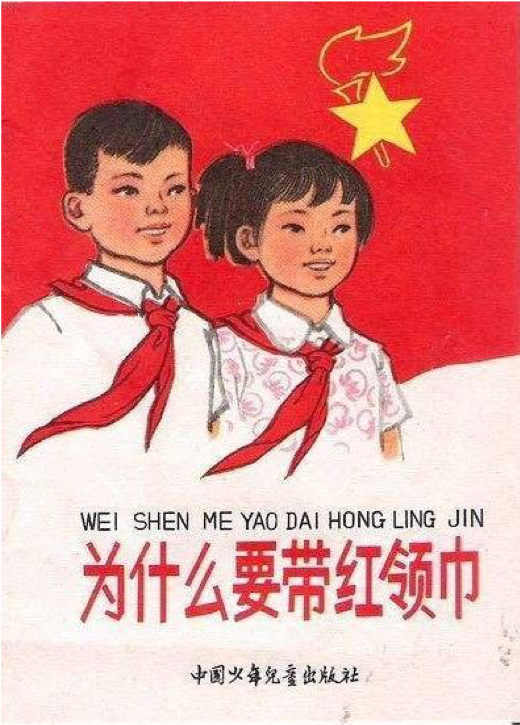
Figure 1: The Book Cover of ‘Why Wear a Red Scarf?’ Published by China Children’s Press, Photo from Google Images
In China, publications for children (as per Figure 1) and political education within the schooling system, jointly construct stories about how the Chinese martyrs and heroes’ blood dyed scarves red. Once the institutional power (of political and educational structures) authorised the narrative of ‘honour’ associated with these scarves, it was taken up as a political fashion among young people. However, only the most outstanding pupils – young people aged six to fourteen – were allowed to wear the red scarves issued by the government, as part of a movement called ‘Young Pioneers of China’. Similar movements successively appeared in many Communist countries, such as North Korea and the Soviet Republic.
The motto of the Young Pioneers of China is “To fight for the cause of communism: Be ready! Always being ready!”
This reflects the socialist construction of ‘red’ emotions, such as enthusiasm and selflessness. In turn this shows how ideology informs moral values and behaviours – forming a distinctly Chinese tradition (Kleinman and Kleinman, 1985, p. 473).
This is true even for my generation, who were born in peace-time. As children, we committed to follow the notion of the Young Pioneers: to be self-disciplined, and contribute to society. In doing so we took on forms of moral behaviour that were embedded in political systems.
In this blog post I argue the ‘administrative evil’ of Young Pioneers not only produces soft violence through formal and informal rule-making and punishments, but also generates social inequality. I also argue that the process creates a ‘shadow’ in adulthood, that I reflect on as being part of the social machinery of oppression as it functions in the collective childhood of Chinese students.
Establishing the Administration: inclusion and exclusion
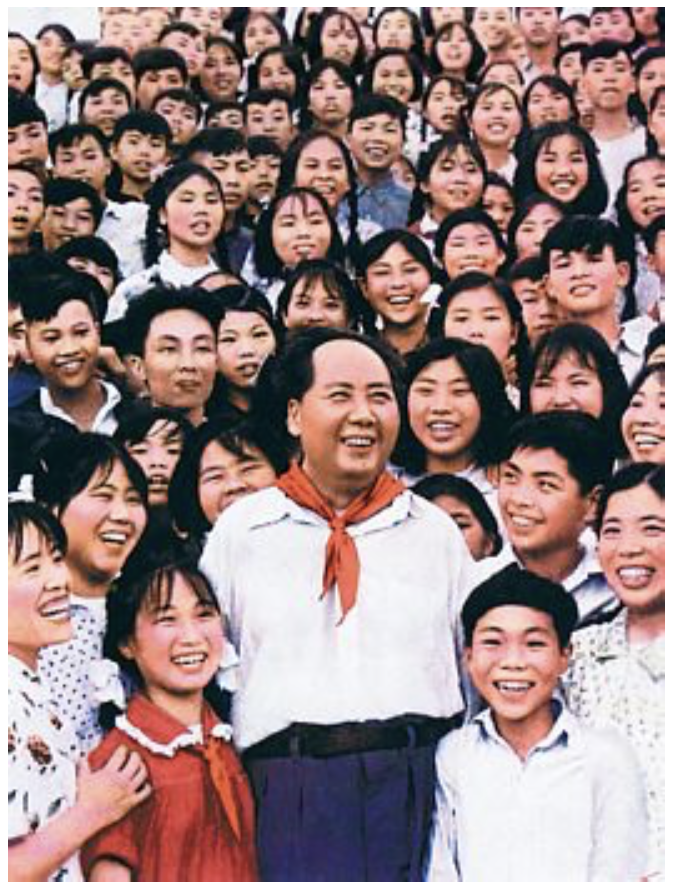
Figure 2: Young Pioneers Representative offered Red Scarf to Mao Zedong on 25th June 1959, in Mao’s hometown Shaoshan, Hunan province. (Photo from People.cn http://politics.people.com.cn/GB/1026/4792695.html)
In the middle of the 20th century (Figure 2), wearing a red scarf was the least privilege for very few authorised young pioneers. Two representatives (the boy and the girl next to Mao) were able to join first-class universities in Beijing once the government processed the resumption of college entrance examination in 1978. After graduation, they were expected to marry, because of this shared honour during childhood.
In contemporary primary schools (especially after the reform and opening-up policy in 1979), most pupils joined the Young Pioneers of China. To wear a red scarf on school days became everyone’s responsibility; for their class honour and individual dignity. Under the governance of senior pioneers, children’s obedience was cultivated by the ideological administration of youth glory.
Children who could not, or did not, join the young pioneers and wear red scarves became the minority among their peers (Figure 3). They would be excluded as outcasts for this. In this way, red scarves acted with authority, to include or exclude.
I vividly remember one day at school, when all my classmates shamed my desk-mate, for being the only person who had forgotten to wear the red scarf. A young ‘senior pioneer’ who was on duty deducted our class’ points, which led to us losing our status as ‘advanced’ level, in the final grade. My desk-mate was isolated by most classmates and mentors, for his accidental lapse. I remember that I remained silent, although I thought their behaviour toward him was wrong. Three months later, his father decided to transfer him to another school.
In this case, ordinary people like youth pioneers act appropriately to their organisational obligations, doing what those around them would agree they should be doing. Yet they participated in, or contributed to, what a critical and reasonable external observer might identify as morally wrong, in the distress they inflicted upon that one child.
What is administrative evil?
Social scientists Adams and Balfour (1998) deem that the technical-rational approach to social and political problems that characterises the modern age, has enabled a new and frightening form of evil. This evil is associated not with sadistic intention, but with harm caused by participation in the administration of everyday systems (Adams and Balfour, 1998, p. 13). Typically, and unlike many other forms of ethical failure, the appearance of ‘administrative evil’ is masked (Adams and Balfour, 1998). People can engage in acts of evil, unaware that they are doing so (Balfour and Alibašić, 2016).
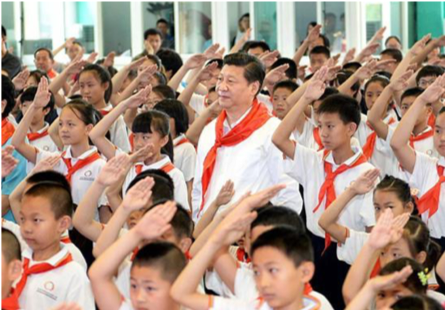
Figure 3: Xi Jinping celebrated International Children’s Festival with Young Pioneers in Beijing Ethnicity Primary School on the 30th May 2014 (Credited by Xinhuanet, Photo from CCTV News http://news.cctv.com/2018/06/01/ARTISXoZr80oKgiYmjswGq3F180601.shtml)
As a child, I regarded the red scarf as the symbol of glory, as I was taught to do. But through this lens, as a scholar of anthropology now, I realise that it was a tool through which the children could enact and reinforce everyday systems of power, through bureaucratic systems within schools. In the harm it enacted on some children, it fits very closely with Adams and Balfour’s description of administrative evil.
Anthropologist Caton (2010, p.167) uses two philosophical concepts to unpack the idea of guilt or culpability in acts of evil: intentionality and contingency. These ideas highlight the way an anthropological analysis of evil should note the roots and contexts of actions; the role of both self-awareness (or lack thereof), and circumstance. In a similar way, Farmer (2004) proposes that anthropology of structural violence can often be understood as patterned by history, biology, and political economy (Farmer, 2004, p. 308), as well as individual ‘choice’.
Both of these views call for a holistic understanding of evil: linking macro forces to personal experience. Employing these theories is useful to examine the formation and social effect of Youth Pioneers movement, as an example of administrative power. In doing this I have also noted the rising collective nostalgia associated with red scarves, across now-adult populations.
The price of growth: collective nostalgia
In different historical contexts, both generations before and after the 1979 reform have been educated by the ideology of the red scarf – with wearing red scarves part of the recognition of excellence. When National leaders meet children who are honourees of the Young Pioneer programme, they do so knowing this glorious moment will be remembered (by the children, and others) as part of the chid’s lifelong glory.
For some individuals though, being deprived of the red scarf as a punishment has also become a part of the collective memory of a Chinese childhood.
Interestingly two different recent short films – Hong Ling Jin (2011) and The Red (2010) – both tell a story about boys were punished by confiscating their red scarves because they read cartoon books in classes. Under the punishment of the Young Pioneers, and under the institutions’ supervision, these actions cause the protagonists to fall into rebellion and self-doubt.
Both of the film’s directors were born in 1980s’ China. They described their creations as part of “nostalgia”, representing their experience in primary schools.
The social media response to these films reflects a recognition that the heart-breaking moment of losing a red scarf has formed a deeply emotional part of Chinese people’s individual and collective identity. However other aspects of public discussion on social media tends to interpret their films as the “indictment of red scarves”.
Onwards
The red scarf, a symbol accompanied by a legend about political heroes, presents a vision of glory to Chinese children. Wearing a red scarf encouraged me to embody the moral emotions of communism. However the scarf as a visible sign of being a Youth Pioneer, also became the sign of privilege, and functioned to produce obedience at an early age, via reproducing established systems of governance though bureaucratic systems. It shaped our behaviour, even to the point of our participation in emotionally harming ‘divergent’ peers.
How can a child make a moral judgement, when he/she submits to the collective? For me, the red scarf is a reminder that I, like others, I have passed through the valley of administrative evil – where no one is innocent, and no one is exempt.
References:
- Adams, G. B. and Balfour, D. L. (1998) ‘The Dynamics of Evil and Administrative Evil’, in Unmasking Administrative Evil. Thousand Oaks: SAGE Publications Ltd, pp. 2–13. doi: 10.4324/9781315716640-1.
- Balfour, D. and Alibašić, H. (2016) ‘Administrative Evil’, in Farazmand, A. (ed.) Global Encyclopedia of Public Administration, Public Policy, and Governance. Springer International Publishing, pp. 1–5. doi: 10.1007/978-3-319-31816-5_1119-1.
- Caton, S. C. (2010) ‘Abu Ghraib and the Problem of Evil’, in Ordinary Ethics : Anthropology , Language , and Action. New York: Fordham University Press, pp. 165–184. Available at: https://www.jstor.org/stable/j.ctt13x07p9.12.
- Farmer, P. (2004) ‘Sidney W. Mintz Lecture for 2001: An anthropology of structural violence’, Current Anthropology, 45(3), pp. 305–325. doi: 139.080.239.064.
- Kleinman, A. and Kleinman, J. (1985) ‘Somatization: the interconnections in Chinese society among culture, depressive experiences, and the meanings of pain’, in Lock, M. and J. F. (ed.) Beyond the Body Proper: Reading the Anthropology of Material Life. Durham and London: Duke University Press, pp. 468–474.
NZ Schooling: a case study of administrative evil against Māori?
Written by Etienne DeVilliers, for an assignment on ‘administrative evil’ in ANTH424.
‘Evil’ is a powerful and versatile word. Often when we think of evil, what comes to mind are very deliberate, sadistic or strategic actions. Yet sometimes deeply harmful actions are unintentional.
We all know the consequence of a mistimed word or unthinking act, on an intimate, personal scale. But this is also true on a wider social social scale too, in terms of the negative consequences that can result for certain people or groups, simply from the large scale bureaucratic systems we all take part in. This is what the concept of ‘administrative evil aims’ to capture, and contemporary social scholars argue that more attention needs to be paid to this in the modern, technologically and bureaucratically efficient world we live in (Adams & Balfour 2014).
How does ‘administrative evil’ apply to the NZ schooling system?
Administrative evil is a form of evil which has emerged within a world with a rapidly expanding population which has turned to rationalist systems, such as bureaucracies. Administrative evil relies not on passionate hatred and emotional connections, but rather on a more banal form of evil, characterised by disinterest or unawareness – and thus often lacking in an intentional motive. The example of this that I will be using is the disregard towards the gap in academic results between Māori students and their peers within the contemporary New Zealand schooling system (Page 2008).
I will argue that the harmful consequences of this are a result of administrative evil, where European rationalist approaches are favoured over Māori systems of knowing, resulting in this disparity in educational outcomes.
However I must stress I am not saying this is done intentionally by the vast majority of people – policy makers, teachers, and so on – but instead that it is done because unthinkingly, by people who grow up within these systems and never stop to question them. In short, an unintentional evil – detached from the radical personalities of people like Stalin or Hitler, and embedded instead in bureaucratic systems with in-built disadvantages. There are a few key ways in which this unintentional evil is present in NZ schooling systems, that I will look at.
When bias meets bureaucracy
People of different cultural backgrounds approach situations in different ways. One study showing this in an educational setting, compared how Chinese and American children understood stories in different ways, reflecting wider cultural norms (Wang & Leichtman, 2000). Cultural differences are also present within a New Zealand context, in ways of knowing and learning that are distinct between Māori and European systems.
Despite the country’s aspirations towards a ‘bicultural nation’, the very nature of contemporary schooling institutions in New Zealand is derived from European thought. Much of the comes from past and ongoing perceptions of the superiority of European systems and ways of knowing – the legacy of New Zealand’s past as a colonised nation. Indigenous ways of knowing have been disadvantaged and repressed in numerous systematic ways during this period of political dominance – as is seen among indigenous people in many colonised nations around the world.
Not only the methods and contexts of education, but the way of measuring the success of education, is based on a western set of values, prioritising efficiency and rationalism.
Today the question of funding is important to analysing administrative evil in any given system (Adams & Balfour 2014). Balfour & Adams argue that institutions, in their strive for greater efficiency, can be either constructive or deconstructive – and in a world where much of the making and unmaking of things comes down to money, ventures which are prioritized for funding can become constructed and those that are not become deconstructed. In this way things that are neglected in terms of funding can become disadvantaged.
Such a case can be seen in the case of Pūhoro STEM Academy (Parahi, 2019) a learning support structure for Māori students which has been successful by many measures, but has a hard time receiving funding due to a perceived lack of efficiency and validity. This is despite it’s potential to address the sometimes large gap between cohorts of Māori students’ results and other students (Page 2008, Collins 2019). In fact another recent public discussion in New Zealand highlights that decisions regarding the funding of Māori centered educational systems are further disadvantaged by the gap between Māori students and their peers (Gerritsen, 2019) – seemingly penalising them for both the result and the cause of the inequality. What this emphasises is how these low results have become an obstacle to improvement, due to questions of efficiency, creating a cycle of administrative evil as less and less access to funding is given.
Cultural ‘border crossing’
Modern education systems in most settler nations are built around western systems. Indigenous forms of knowledge can be and are sometimes introduced to these – but typically in a supporting role, within the overall structures and frameworks of European schooling. This can be seen in the earlier example of the Pūhoro STEM Academy (Parahi, 2019), which is a support system present within a more mainstream system that is western in both nature and design.
What this means is that Māori students, and particularly those who grow up with Te Ao Māori as the basis for their way of being in the world, have to move from one system of learning to another, or be at a major disadvantage. In short they have to undergo a sort of cultural border crossing (Aikenhead 1996).
This is allowed to occur as the systems we have in place have become taken for granted as the most efficient form of educating the largest amounts of people. This relates to two characteristics of administrative evil, as proposed by Adams & Balfour (2014). The first is that the system has become taken for granted and as such has become seen as ‘natural’ rather than as a flawed institution. The second is a utilitarian logic that essentially condones a “small” evil (in the disadvantaging of Māori) to support a “greater good” (efficiently educating the largest amounts of people possible) (Balfour., et al., 2014).
Conclusion
When you look at the way that modern educational institutions are structured, it becomes clear that certain methods of learning are prioritized within mainstream schooling, due both to a racist history of belief in the superiority of European thought as well as the distinctive characteristic of rationalism in the bureaucratic systems that deliver and evaluate it.
This can be seen in the way Māori education is managed in contemporary New Zealand. The emphasis on outcomes for the majority, the basis of funding decisions on these outcomes, and the placement of indigenous ways of knowing and learning as ‘supplementary’ or ‘supporting’ to the standardised western systems… all of this connects to the idea of ‘taking for granted’ the natural and beneficial nature of these systems.
In practice this means either accepting, or simply not thinking to question, the ‘small’ evils of disadvantaged Māori students, against the ‘greater’ gain of the majority. For all of these reasons, mainstream schooling in New Zealand is a fitting example of administrative evil as it can function, insidiously, in contemporary post-colonial nation.
References
- Aikenhead, G.S., 1996. Science education: Border crossing into the subculture of science.
- Wang, Q. and Leichtman, M.D., 2000
- Page, R., 2008. Variation in storytelling style amongst New Zealand schoolchildren. Narrative Inquiry, 18(1), pp.152-179
- Balfour, D.L., Adams, G. and Nickels, A., 2014. Unmasking administrative evil. Routledge pg 3-22.
- Gerritsen, J., 2019. RNZ, New Zealand retrieved from: https://www.rnz.co.nz/news/national/396560/poor-results-for-maori-pasifika-lead-to-funding-cuts-for-education-providers
- Collins, S., 2019. New Zealand Herald. New Zealand., retrieved from: https://www.nzherald.co.nz/nz/news/article.cfm?c_id=1&objectid=12226060
- Parahi, C., 2019. Stuff., New Zealand., retrieved from: https://www.stuff.co.nz/national/education/110470040/phoro-a-popular-academic-programme-for-mori-will-run-out-of-funding-in-april
Dawn Raids: the terror of racism in 1970’s NZ
Written by Amy Hema, for an assignment on ‘administrative evil’ in ANTH424.
The 1970s saw some of the darkest times for New Zealand, following the economic crash of the late 1960s. With the first waves of unemployment since the Great Depression, the country was looking for someone to blame. It was was in this context that ‘overstayers’ were deemed to be burden to New Zealand [1]. These overstayers were typically Pasifika peoples who had been actively recruited for New Zealand’s booming labour market, in the early 60’s. Now their deportation was deemed a priority.
To this end in 1974 the New Zealand police began raiding houses suspected of containing overstayers, in the early hours of the morning [2]. These came to be known as the Dawn Raids. Racially motivated, and traumatising for the Polynesian population that were often the focus, this is a moment in the country’s history that largely goes undiscussed, and yet had significant impact on a people group that were marginalised, villainised and targeted by the New Zealand government and police.
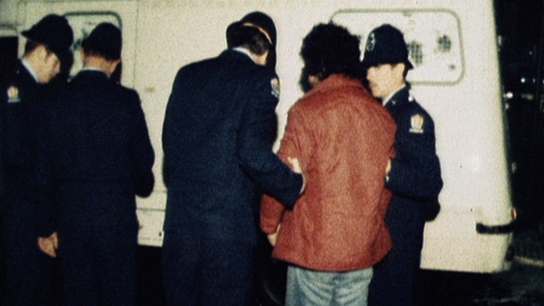
A screenshot from a 2015 ‘NZ on Screen’ documentary called ‘Dawn Raids’. The image shows a Pasifika man being taken into custody by police. The documentary represents very recent attempts to acknowledge this part of New Zealand’s history. Source: https://www.nzonscreen.com/title/dawn-raids-2005
Adams and Balfour have written extensively about the relationship between administration and evil; a relationship that is often overlooked, but powerful in enforcing ‘evil’ in the sense of harm against a particular vulnerable group [3]. The Dawn Raids are a prime example of administrative and bureaucratic authority being used to enact this harm.
Discourses of Dehumanisation
Adams and Balfour argue that our daily lives are built upon are taken for granted assumptions; that we take little time to examine the way we are living and the impact it may have. Subsequently, something as fundamental as language and storytelling can make us susceptible to participating in evil without realising it[3].
The dawn raids went largely unopposed by the general public due to the language and discourse used to describe those being targeted in the raids, being unthinkingly accepted.
In a 1975 campaign run by the National Party, Polynesians were depicted as aggressive, unwelcome pests who were taking jobs away from deserving Kiwis [4]. The ad told the story of New Zealand as a peaceful nation, one that you would want to raise your children in… until the arrival of immigrants. It claimed that these immigrants became incensed by the lack of jobs, healthcare and education, and turned angry and violent.
In these ads, the blame was being placed squarely on Polynesians; the happy compliant residents depicted were white, whilst the angry individual was brown with a large afro. As such, these ads were used to create a divide between ‘us’ and ‘them’ – those who deserved to be in NZ and those who did not.
The ads created a strong and specific narrative that became a taken for granted ‘Truth’; that Polynesians were taking advantage of New Zealand’s resources and generosity, and that they needed to be removed. Referred to simply as ‘overstayers’, ‘illegals’, and ‘browns’ and presented to the public as over-the-top caricatures, a clear message was sent about who these people were, what they were doing to the country and how they should be dealt with[5]. These catch-all terms enable the individual to refer to a group without acknowledging they are individual humans, who came to New Zealand looking for a better life, instead they are just a collective problem.
In interviews taken at the time of the raids [5], New Zealanders were clearly holding tight to these narratives. As such, they became participants in evil – accepting and condoning through acceptance that a group of people be harmed by prejudicial policies and laws. Standing back and watching it happen.
Through social discourse one can readily observe the way in which language is used to dehumanise and separate the other to allow for the continuation of administrative evil – by actively reinforcing racial stereotypes, create to separate and privilege, New Zealand citizens became passive participants.
The Social Construction of Compliance
In the case of administrative evil, there are hierarchies. Specifically, there are the policy makers and the enforcers. Since the policy makers are a few steps removed from the site of violence, they are able to distance themselves from the reality of the situation. The enforcers however are on the ground, and are active participants.
Interviews with former police officers evidence the same position; they may have been overzealous in their attempts to identify and charge overstayers, but they believed their cause was just, and they were following orders[5]. Adams and Balfour have discussed these attitudes in what they call ‘the social construction of compliance’ – in which the an individual is pushed to perform violence under the direction of authority – whether or not they agree with the process becomes irrelevant as they are no longer acting as an individual but as a cog in a machine.
Adams and Balfour argue that as a culture that has come to place so much value on individualism, the USA has come to expect that when presented with a difficult choice, an individual will stick to their morals and refuse to comply[3]. Did the normative ‘Pakeha’ 1970’s New Zealand share a similar moral system? We know from the overzealous policing that during the dawn raids, the police force became aggressive in their pursual of overstayers. They stopped individuals on the street and asking for identification, in what was essentially ‘stop and frisk’, since the individuals stopped were done so based on the colour of their skin. They raided homes at the crack of dawn, deliberately when individuals and families were vulnerable.

A New Zealand police officer on Lambton Quay, in 1975. Source: https://www.stuff.co.nz/national/crime/80132822/decades-investigating-darkest-crimes-does-not-dent-top-detectives-optimism?fbclid=IwAR0gWhk-M76ykJswrlncS8Rsgz4TT6-krw44NeDlEA1LNJ_5jBqvUq6948g
The actions taken by the police and the legal system were extreme, and individuals were being persecuted for minor crimes (such as petty theft) to the fullest extent of the law, at an unprecedented rate – though this was all technically legal, functioning within the system rather than as an exception to it.
Policy makers and police officers put their own opinions and feelings aside to carry out the policies set in place – even if it meant brining harm by enforcing racist ideologies. Whilst there was some push back on the stop and frisk policies, they were ultimately widely enacted by law enforcement[5]. What one can observe from the police tactics at the time is that group morality had the capacity to overrule individualism – a fact not readily embraced by many who believe in individualism.
Concluding Thoughts
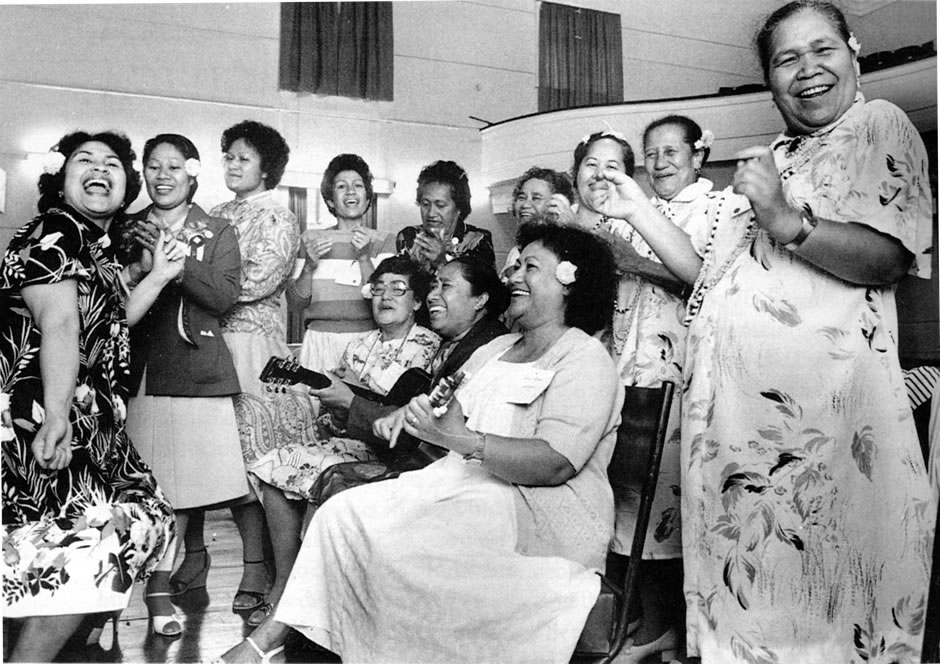
Women performing at a Pacifica conference in 1975. Source: https://nzhistory.govt.nz/women-together/pacifica
What is made evident by examining the history of the Dawn Raids in New Zealand, is that administrative evil relies on both passive and active participation. By sharing narratives of harmful individuals who are taking away jobs from more deserving individuals, and upholding policies that allowed law enforcement to act on racism and stereotypes, a culture was created that allowed evil to continue in a way that was accepted by the mainstream populace.
Adams and Balfour stress that administrative evil flourishes under conditions in which people believe in the cause or adopt the ideologies as taken for granted facts – the success of administrative evil then rests in the failure to identify the evil nature of the act until it’s too late.
References
[1] ‘Dawn Raids’. nd. http://dawnraidsnz.weebly.com/
[2] New Zealand History. ‘The 1970’s. https://nzhistory.govt.nz/culture/the-1970s/1976
[3] Adams, G. & Balfour, D.L. (2014). Unmasking Administrative Evil: the dynamics of evil and administrative evil. Sage Publications.
[4] Te Ara (1975) ‘National Party Election Campaign Ad’ https://teara.govt.nz/en/video/2158/national-party-advertisement
[5] ‘NZ/Samoan Dawn Raids’ Documentary New Zealand. https://www.youtube.com/watch?v=ZviIkSxjV0k
Women Walking Alone: An ethnographic soundscape
A soundscape produced by Laura Gunther, for ANTH210 (Translating Culture)
About the soundscape:
 The soundscape I produced for ANTH210 responded to my research question: ‘What are some of the challenging experiences of being (cisgender) female in Dunedin?’
The soundscape I produced for ANTH210 responded to my research question: ‘What are some of the challenging experiences of being (cisgender) female in Dunedin?’
This is a topic that felt most relevant to me and what was/is applicable to Dunedin culture. In order to encompass this in an audio format, I explored both my personal experiences as a woman, along with those experienced by others through a collection of audio recordings, woven together to produce the sound of a woman walking alone at night.
About the ANTH210 process:
The process of recording the soundscape audio came with its challenges; sound interruption was one of them. Many of my audio clips had to be re-recorded in order to achieve what I wanted out of my ethnographic research. Furthermore, finding relevant audio recordings came as a struggle. It came as quite a challenge to decide upon sounds produced within Dunedin that would provide me with the environment I had pictured within my mind. While this was eventually resolved, I also feared that my lack of technological experience would interfere with the quality of my soundscape, and I continued to believe this up until its submission. But thankfully, I recall that technological experience is not what defines the quality of a soundscape – rather it is its content and how it all comes together that matters.
My chosen format for the soundscape was intended to immerse the listener into the mind of a fearful woman – as many feel – when travelling alone at night. While this is not felt by all women, I wanted to produce a soundscape that was a harsh reality. Through these chosen sounds, a woman’s experiences, along with fears, is captured – producing an insight as to what a woman may experience – even in a student environment such as Dunedin.



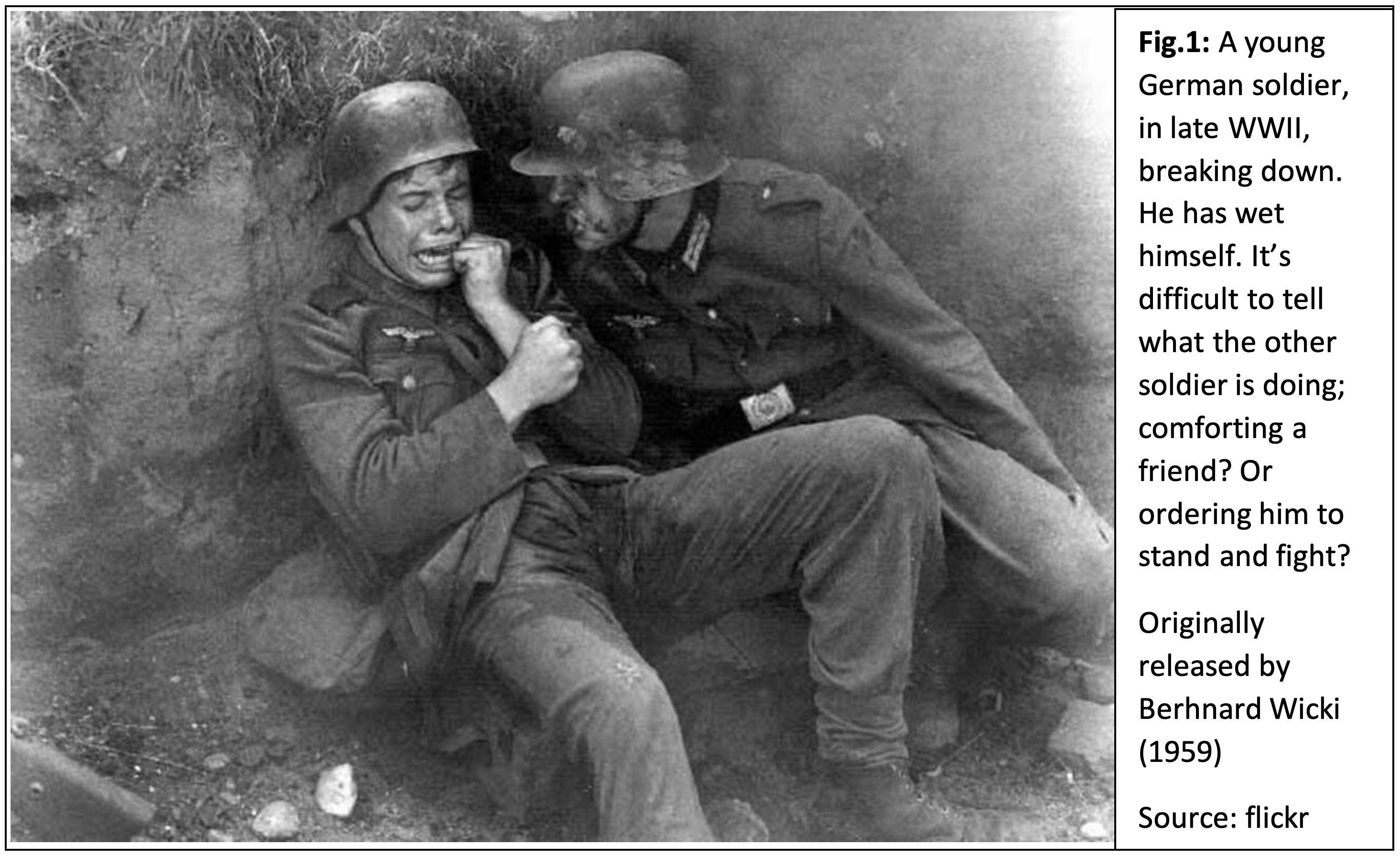


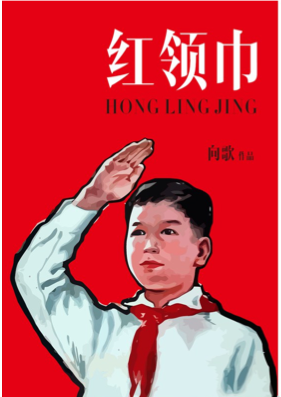


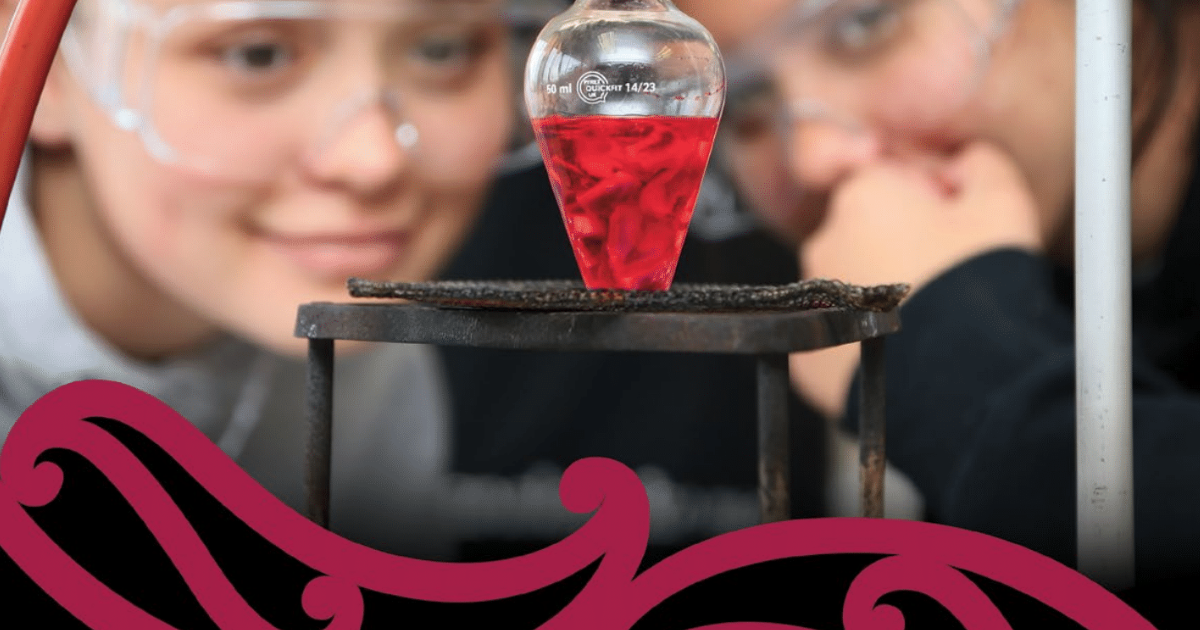


Red flag waving: Medical crowdfunding trends show the precarity of kiwis in Australia is not just a Covid-19 issue
Posted on by smisu13p
Covid-19 has put an enormous strain on New Zealanders living in Australia, with the Australian government being slow to extend any sort of benefit when lockdowns began in March this year. But the precarity of this group is far from new.
New research on health crowdfunding highlights how wrong things can go, with dozens of families findings themselves reliant on the whims of ‘the crowd’ to support them through dire medical situations, when the state refuses to take responsibility.
Life, death, and the crowd
Donation-based online crowdfunding is an increasingly common way for individuals and families to seek help for various types of need. Health-related crowdfunding is the largest sector of the international platform GoFundMe (which has 80% of the global market share, and takes a tidy percent of all donations) as well as having a major presence on New Zealand’s own non-profit platform Givealittle.
New Marsden-funded research led by Dr Susan Wardell, at the University of Otago, has analysed 574 active campaigns by kiwis both within NZ and overseas, across both platforms, in order to understand who is turning to this means of support, and why. The study found a subset of 44 campaigns were created by Kiwis living in Australia.
Internationally, higher rates of crowdfunding appear in places with weaker formal safety nets; including healthcare coverage, insurance, or social security. Because of this, research into crowdfunding can reveal wider structural inequalities, and in this case the life-or-death implications of questions around benefit eligibility, and citizenship rights, for those who look for a ‘better life’ in Australia.
A better life
The stories and outcomes of the health crowdfunding campaigns in this study, were documented in June 2020 – at the end of New Zealand’s lockdown, but amidst Australia’s ongoing regional restrictions. However, most campaigns pre-dated the pandemic; which is telling in itself
72% of the donation recipients were adults and 28% were children. These are people who experiencing brain tumours, various cancers, heart disease, spinal injuries, spinal injuries, among other issues. The overwhelming majority (77%) were fundraising due to illness, with a handful fundraising due to injuries (9%) or disabilities (7%), and the remaining few campaigns categorised as elective, fertility-related, or mental illness-related. Most campaigns are organised by family members, partners, or friends, rather than the ill person themselves.
Most asked for money to cover direct medical costs, such as hospital care, outpatient medical and diagnostic services, pharmaceuticals, medical or mobility equipment, rehabilitative care and so on.
However, 34% of them also specified the need for help in meeting general living costs, such as household bills, childcare, and transport during times of illness; factors that all have flow on affects for physical health as well. This was much higher than the number of New Zealanders based in New Zealand, who were also crowdfunding, with less than 24% of these requesting help with general living costs.
The lack of access to healthcare and social support, was explicitly stated in two thirds of the campaigns, as the reason for their need:
Multiple cases mentioned working and paying taxes in Australia long term and still not being able to access meaningful supports. For example, while one family had “lived and worked” in Australia for eight years, they were unable to access any social welfare when the father was diagnosed with a brain tumour. Another campaign tells the story of a terminally ill man residing in Australia for 18 years but still has no access to support. In the campaign his family states he is not “allowed” to become a citizen now because of his diagnosis, but also that is unable to return to New Zealand for treatment because supports are no longer available to him after living in Australia for such a long time.
Citizenship struggles
In 2001 policy changes implemented in Australia saw that New Zealanders living there would stay on an indefinite visa, rather than gaining citizenship. While New Zealanders have access to emergency care under this system, any long term and ongoing treatments are not covered. This includes doctors visit and pharmaceuticals. It also limits access to welfare and social support.
Furthermore, marriage to an Australian citizen does not grant citizenship and the subsequent benefits of affordable healthcare and social support. Those married to Australian citizens still were unable to access welfare and health care assistance, while living in Australia with their partner (even if they were working themselves). This means that individuals are faced with potentially uplifting their lives back to New Zealand to receive the treatment needed, even though their lives are embedded in Australia.
Children and families
Though crowdfunding presents individual stories, designed for public attention, very few are about individuals alone. Family members are more than not implicated in the difficult sets of laws around citizenship and welfare access.
Children born in Australia to New Zealand citizens must reside in Australia for 10 years before they are citizens. This means they are ineligible for supports. For kiwi families living and working in Australia, whose young children have medical needs, this rule can have severe impacts. For example, one campaign was for an 18month old child with a serious neuromuscular disorder, who was born in Australia, to parents who are New Zealand citizens. Though he is eligible for “life-saving treatment” through the government, they explain he needs further help for costs he is not eligible for help with, including the therapies, and equipment, that might enable him to one day crawl or walk.
Crowdfunding campaigns typically involve narratives crafted to present ‘deserving’ individuals as worthy recipients of donations. Overseas studies have shown this typically takes the attention away from systemic issues. The campaigns we studied were atypical in that, to explain their situation and justify asking for help, they often went into detail about the systems they were caught within:
Both these examples reflect the fact that if parents of a child are New Zealand citizens, even if the child was born in Australia, they still do not have access to supports and affordable healthcare for that child. This is in stark contrast to what Australians living in New Zealand receive. It shows the high degree of awareness of the campaigners to the systems they are caught within, but have no opportunity to change or contest.
Unequal exchange
The benefits extended to New Zealanders living in Australia are vastly less than those that apply to Australians living in New Zealand. This has been the focus of an ongoing campaign by Oz Kiwi, a small team of volunteers governed by a committee, whose purpose is “campaigning for the fair treatment of New Zealanders living in Australia”. They provide the following, striking graph about the disparities…
Figure 1: ‘Rights comparison’, from the OzKiwi fact sheet, October 2016. http://www.ozkiwi2001.org/2016/05/oz-kiwi-factsheet/
In 2017, in response to census data researchers also pointed to inequality and discrimination against New Zealanders living in Australia. They also suggested that these measures appear to be specifically targeting Māori and Pasifika immigrants, with less than 3% of immigrants from New Zealand who take up citizenship being Māori. OzKiwi also suggestion that single mothers are disproportionately affected by this process.
Covid19 has brought the inequalities to media attention in new ways. In March New Zealand Prime Minister Jacinda Ardern had to publicly and repeatedly request that the Australian Government provide supports for the Kiwis stuck in Australia during the pandemic – and struggling with job losses, and subsequent loss of incomes – in the same way that New Zealand was providing care for Australian citizens stuck in New Zealand. The eligibility of Kiwis for the Australian ‘Jobkeeper’ benefit scheme was eventually agreed. But with the scheme expiring several weeks ago, it is a better time than ever to recognise that the problem is bigger and deeper than this.
Red flag waving
Data on crowdfunding from both before and during Covid19 confirms that kiwis who seek financial assistance from online publics, while living in Australia, are overwhelmingly doing so because they have limited access to formal social supports.
Is it right that they should have to do so?
Crowdfunding is ultimately an unreliable form of meeting what are sometimes life-or-death needs – shown in much existing data to fail to reach its financial goals more often than not. It is a gap-stop at best, and at worst, a red flag waving from the ditch people have fallen into, between Australia and New Zealand, and the safety nets designed not to catch them.
Posted in Case study, Media/political commentary | Tagged australia, benefits, citizenship, Covid-19, Covid19, crowdfunding, health, health crowdfunding, medical anthropology, medical care, medical crowdfunding, migration, New Zealand, precarity, Social anthropology, social security, welfare | Leave a reply